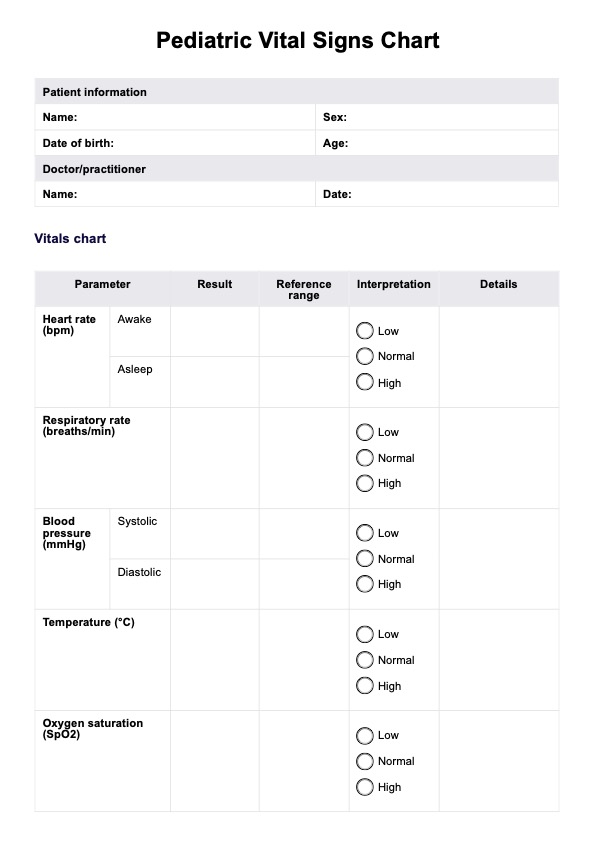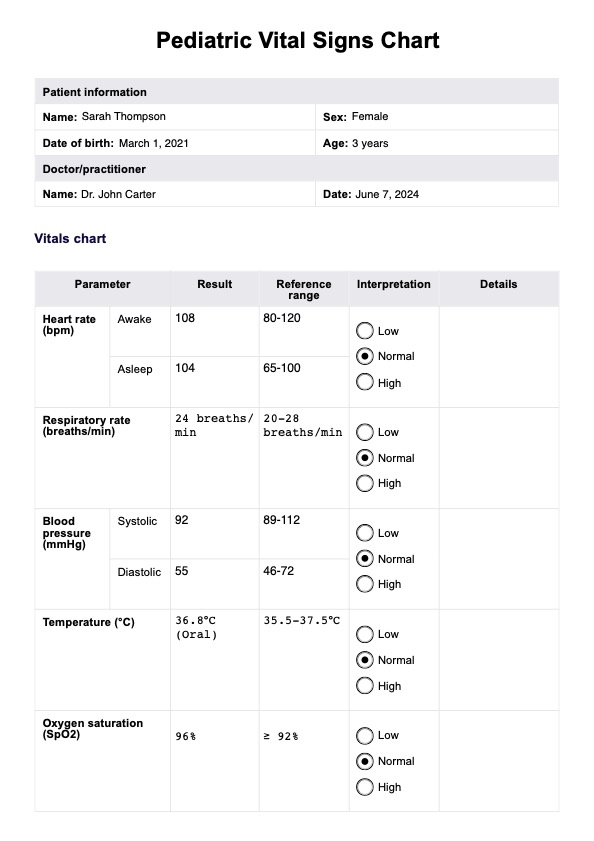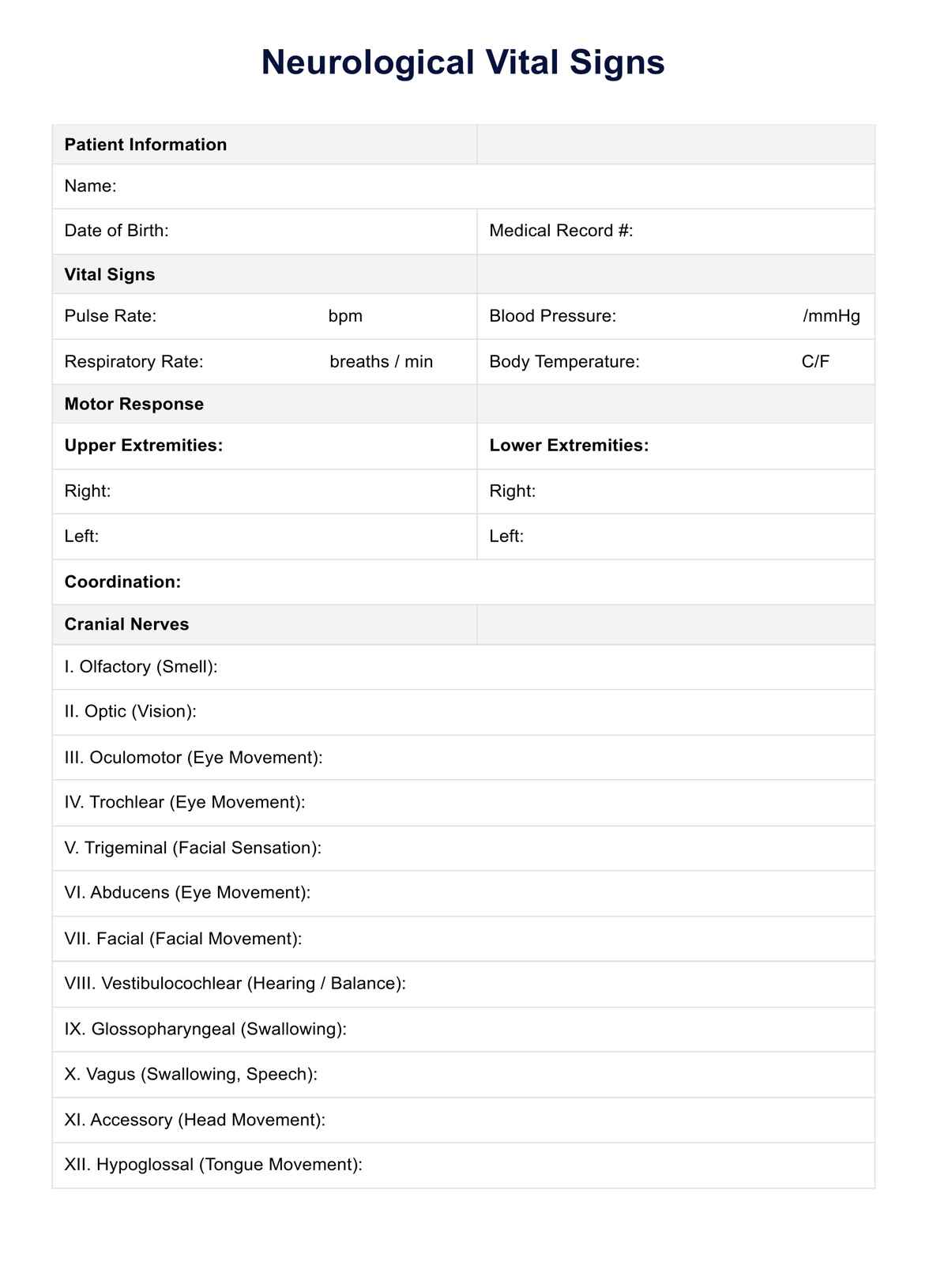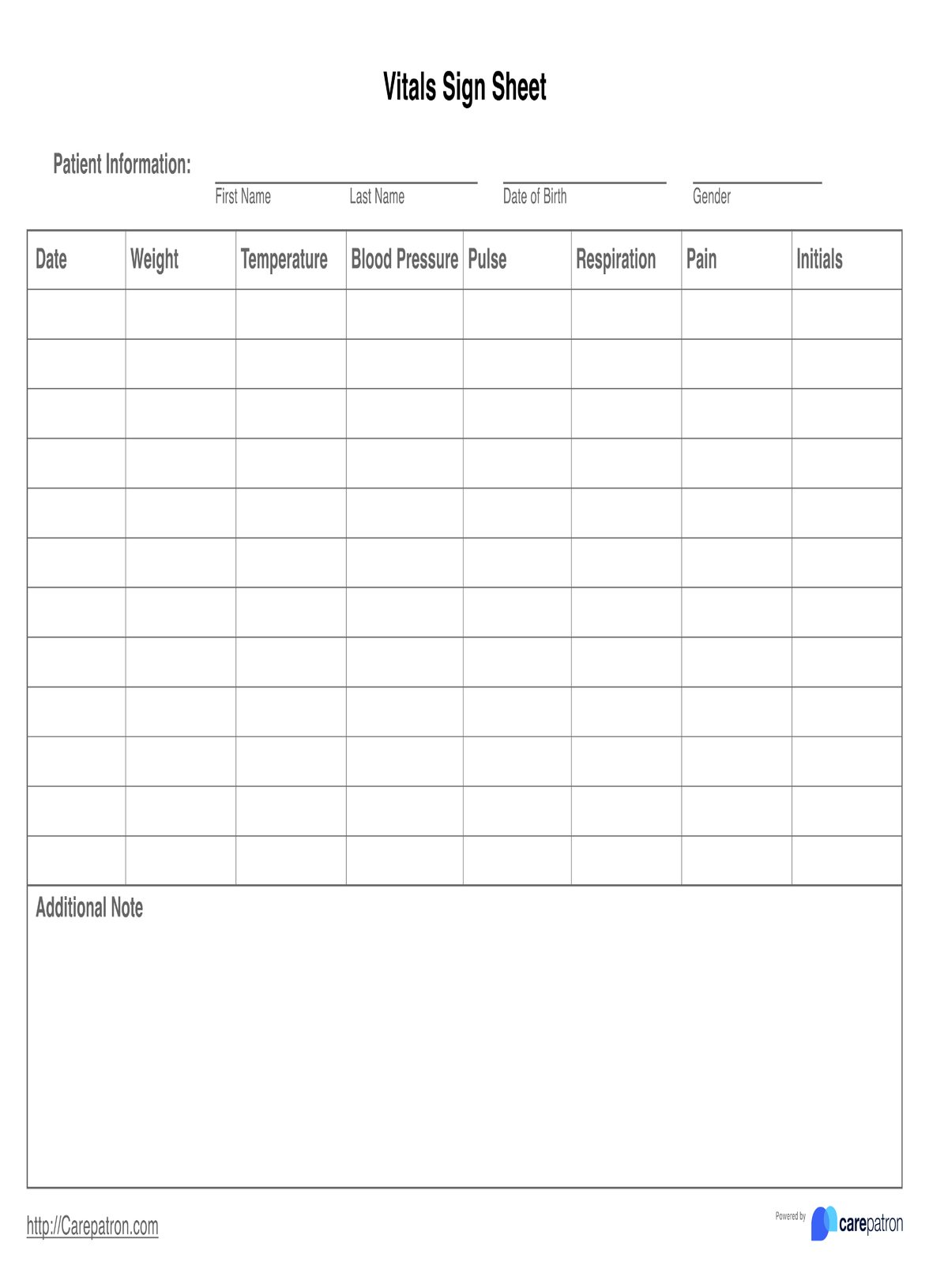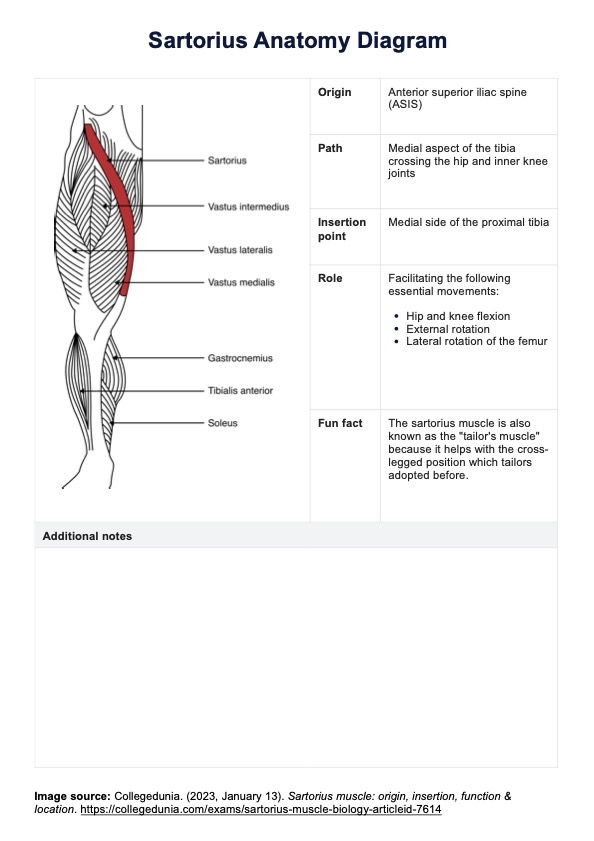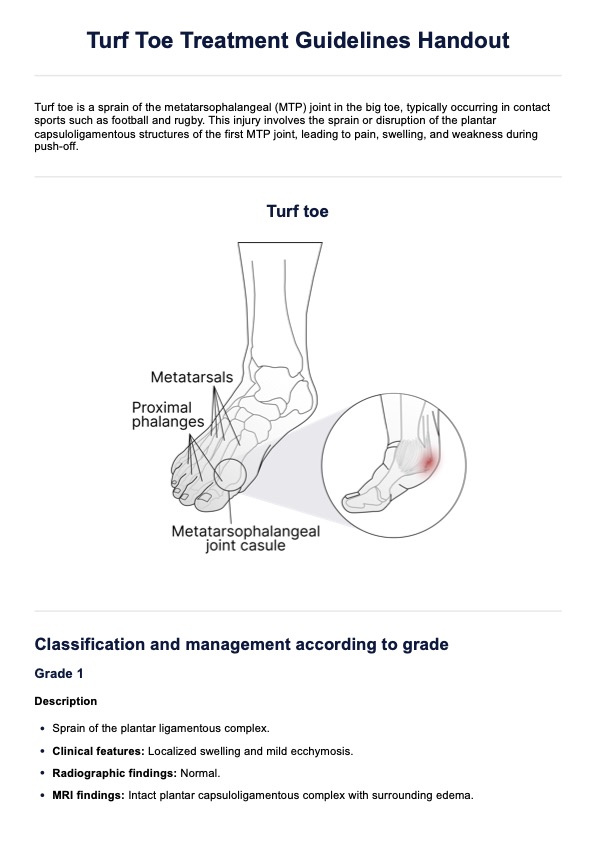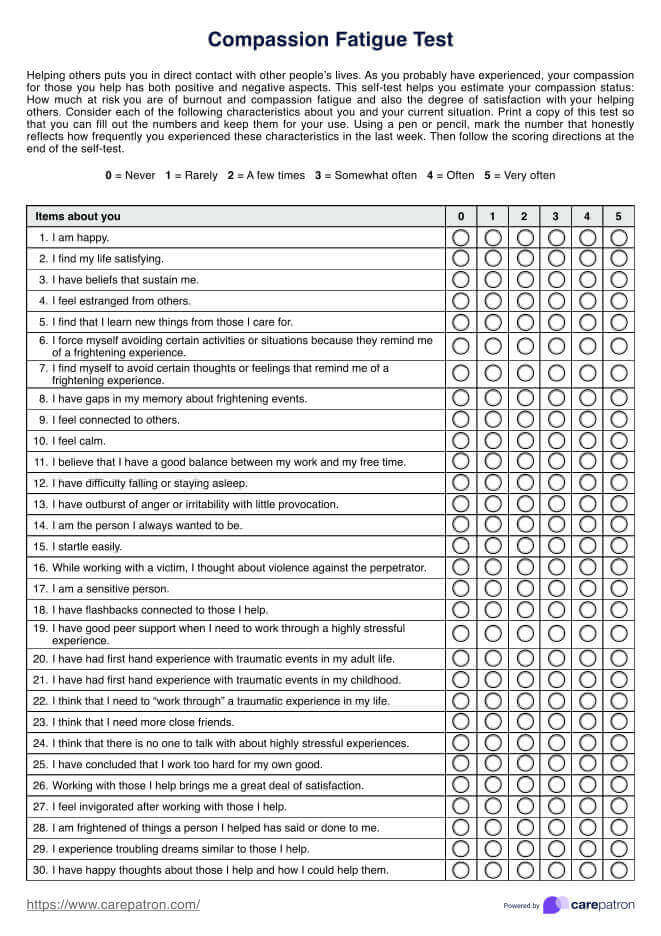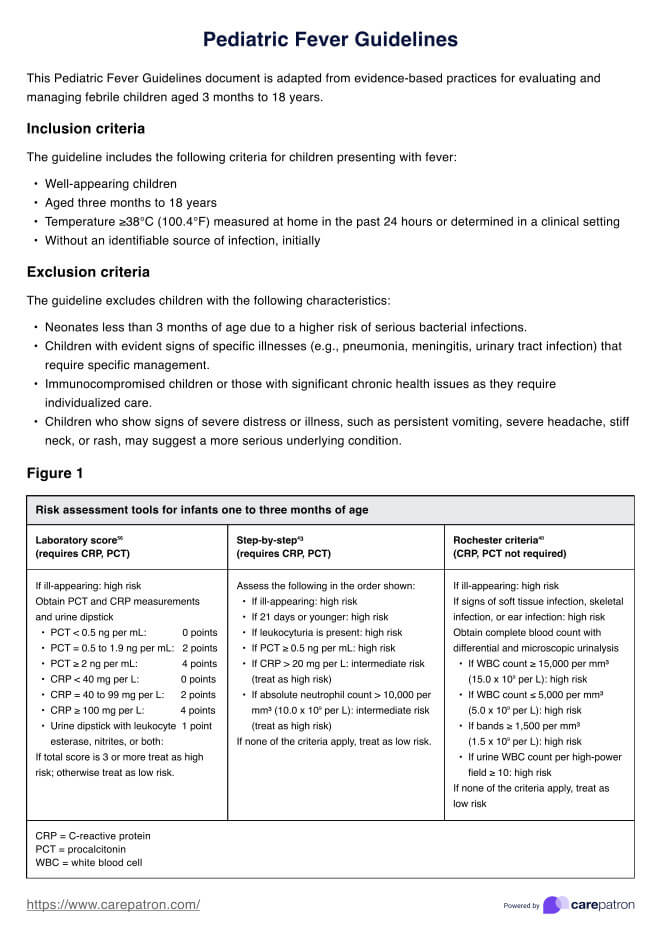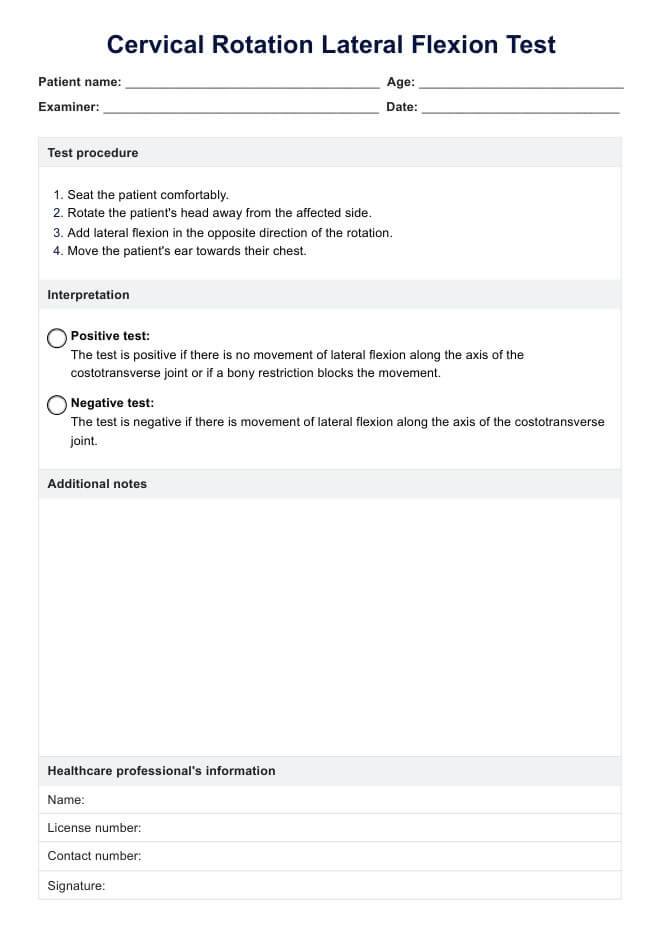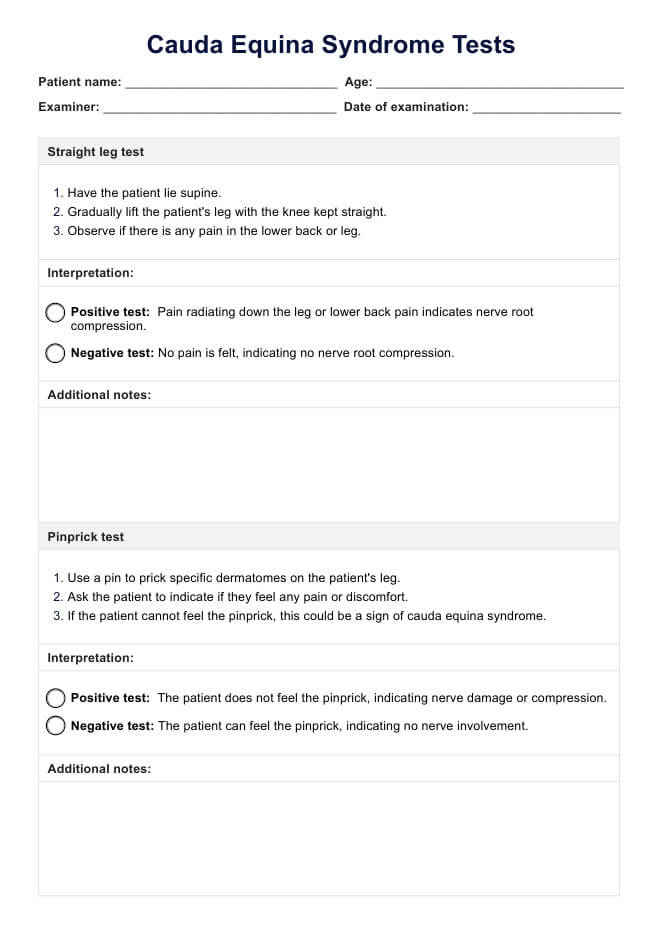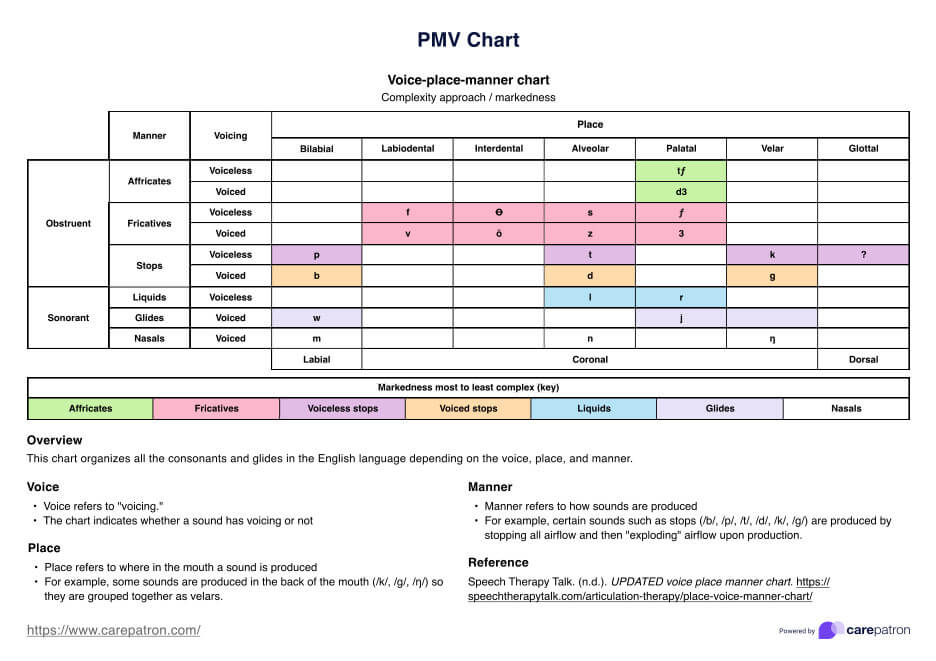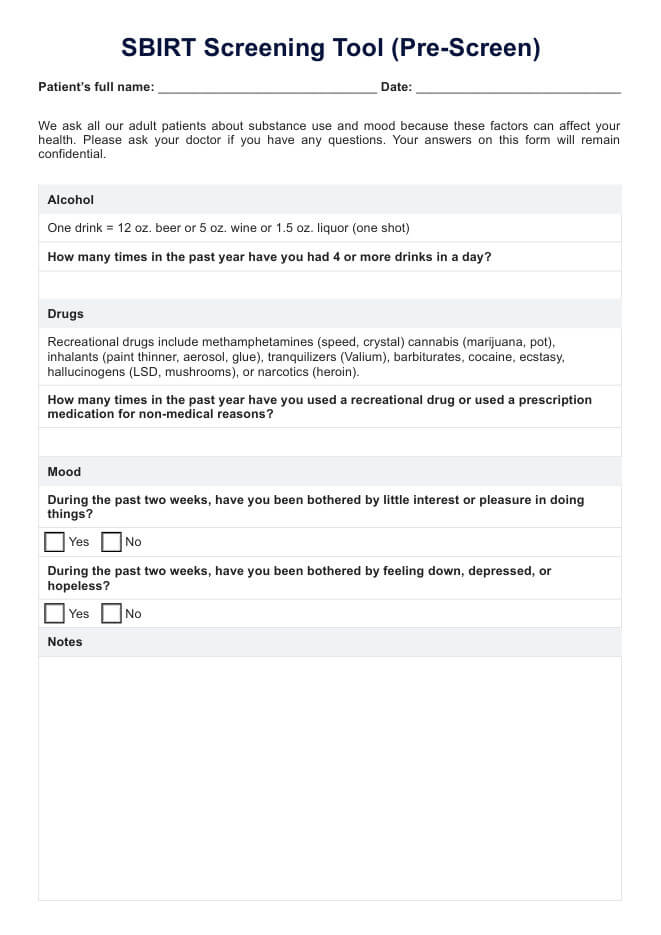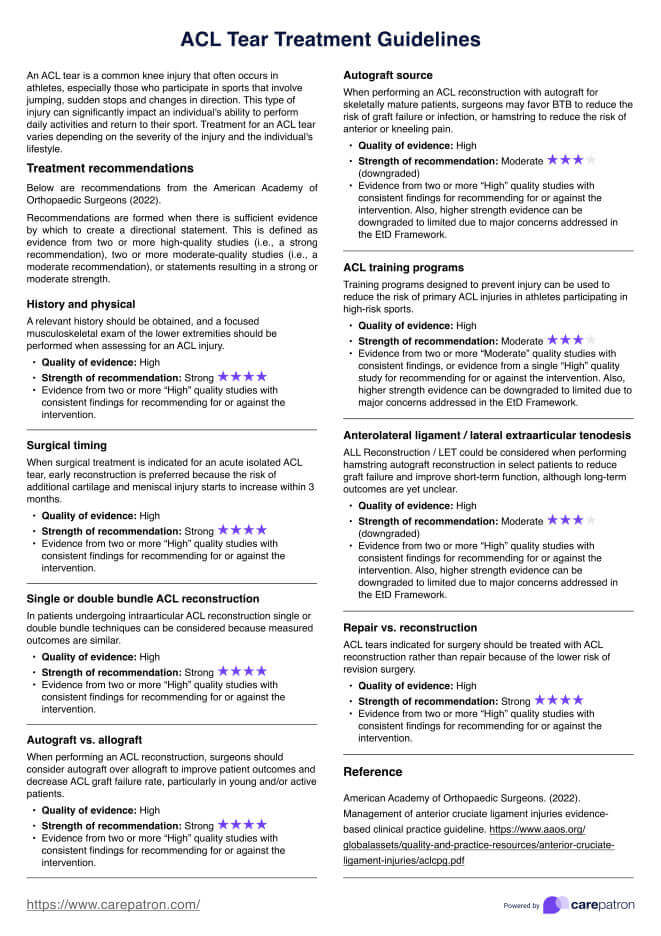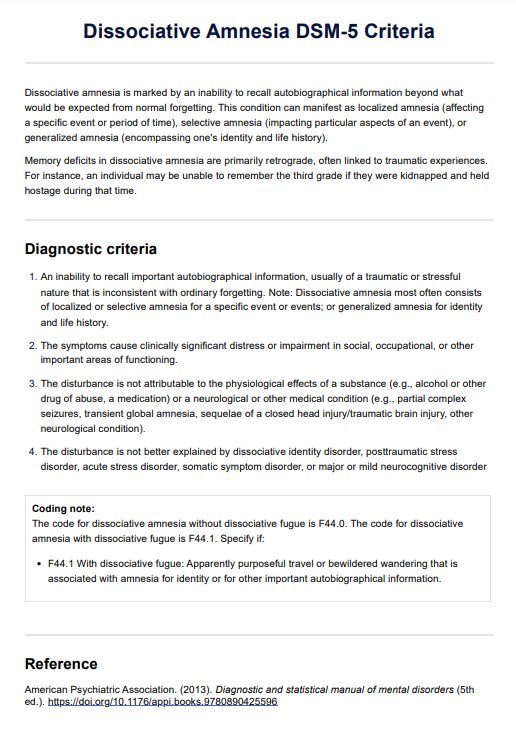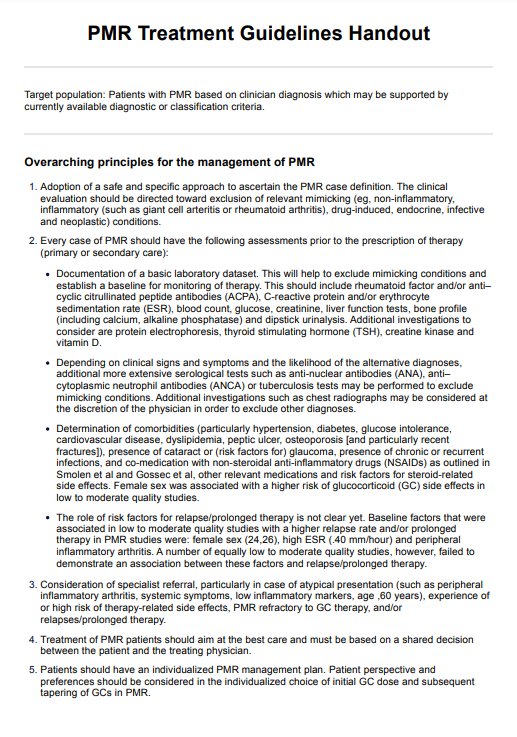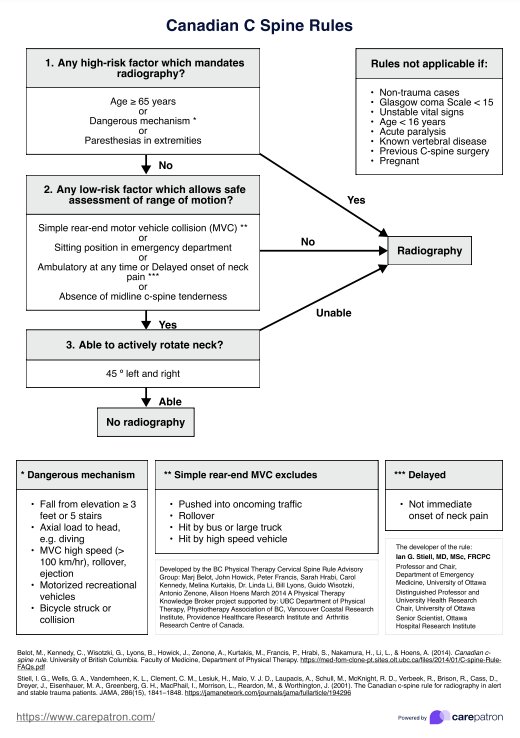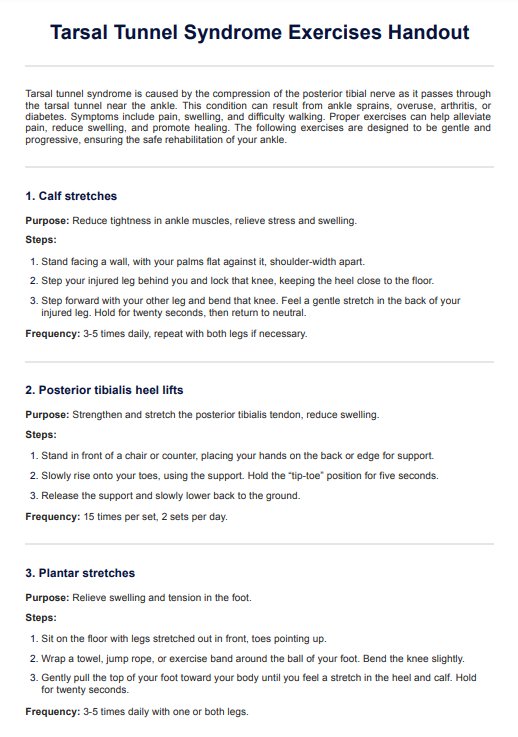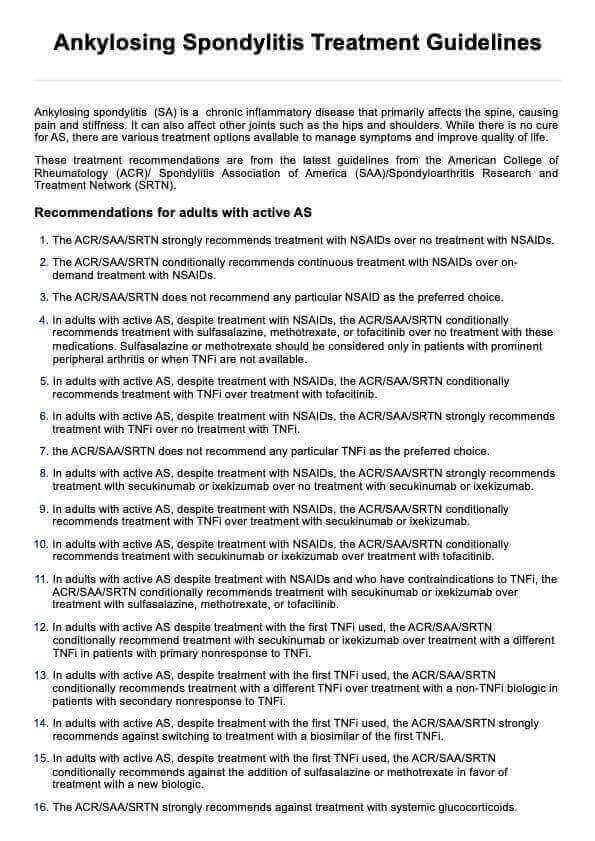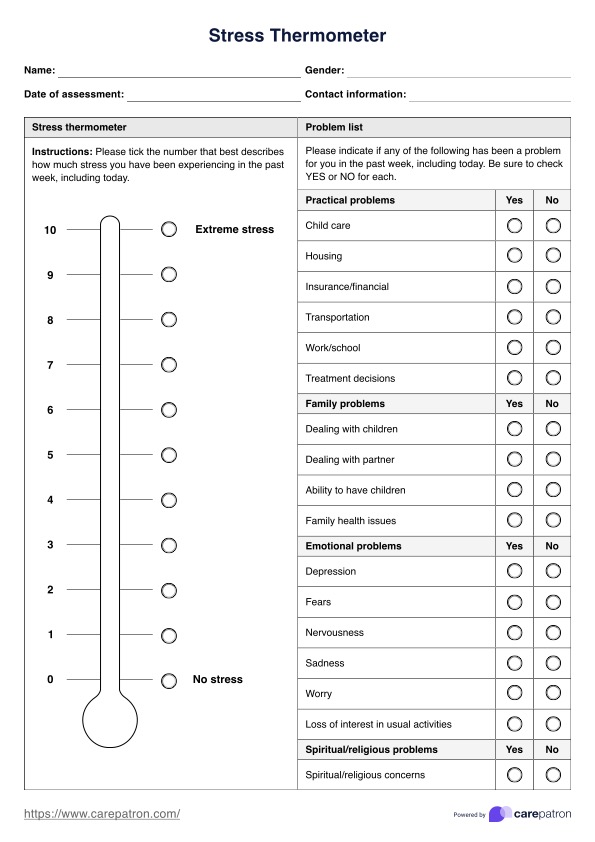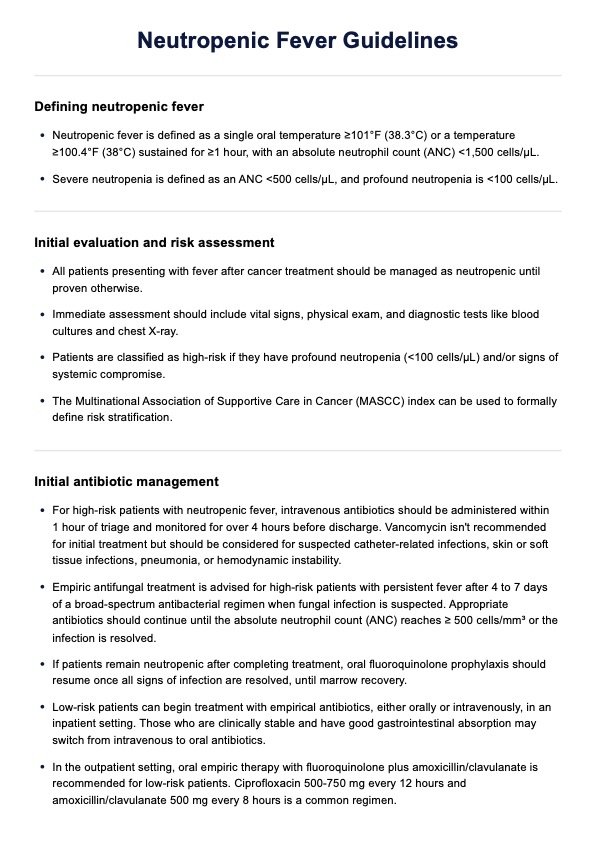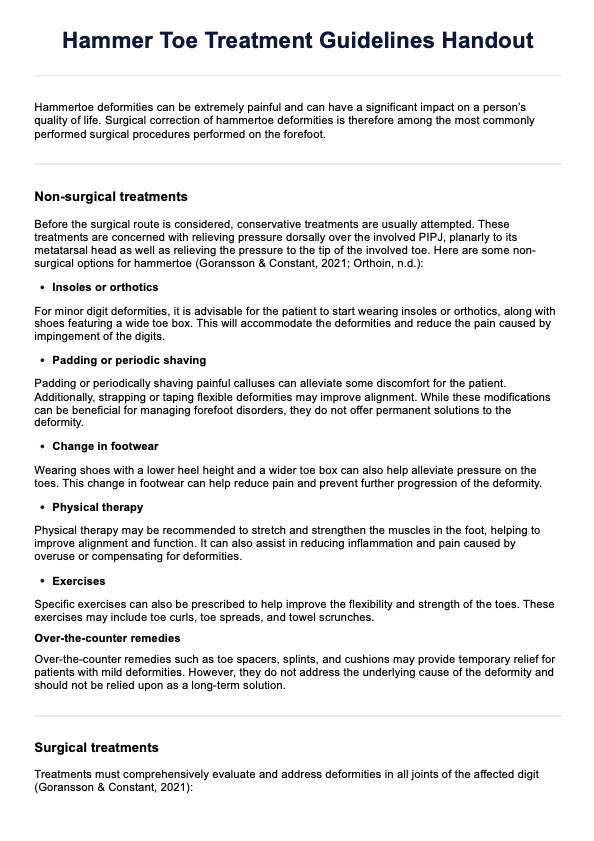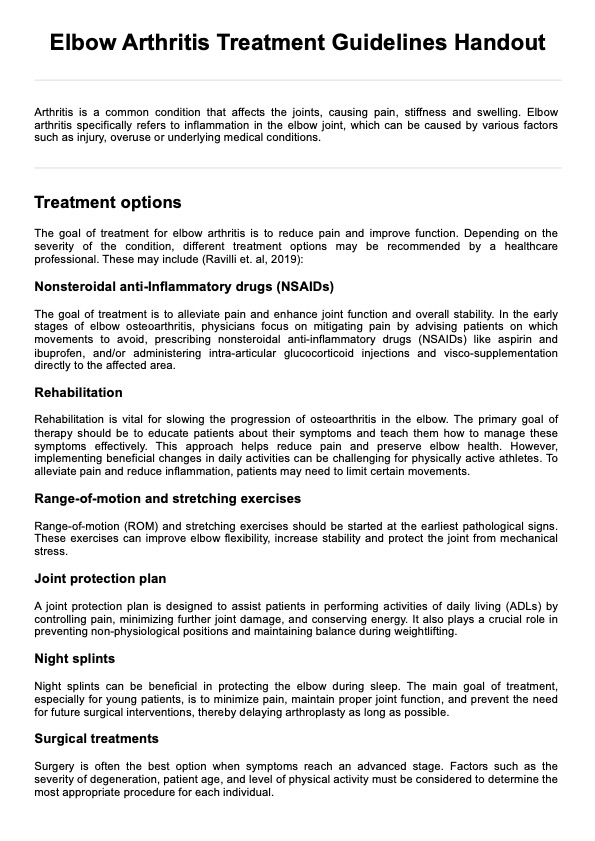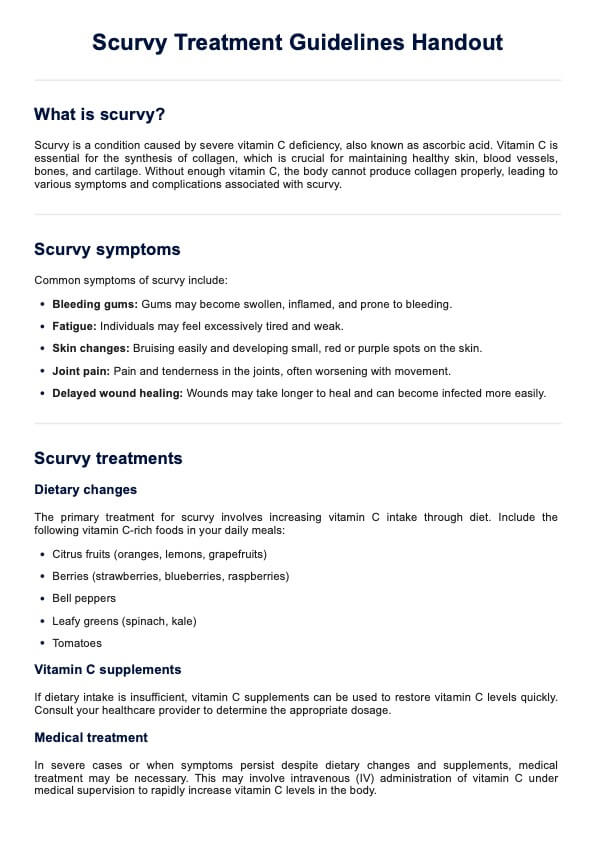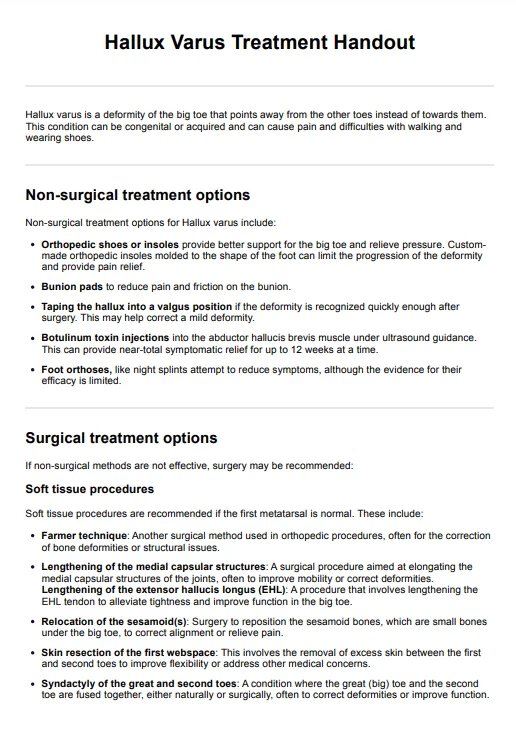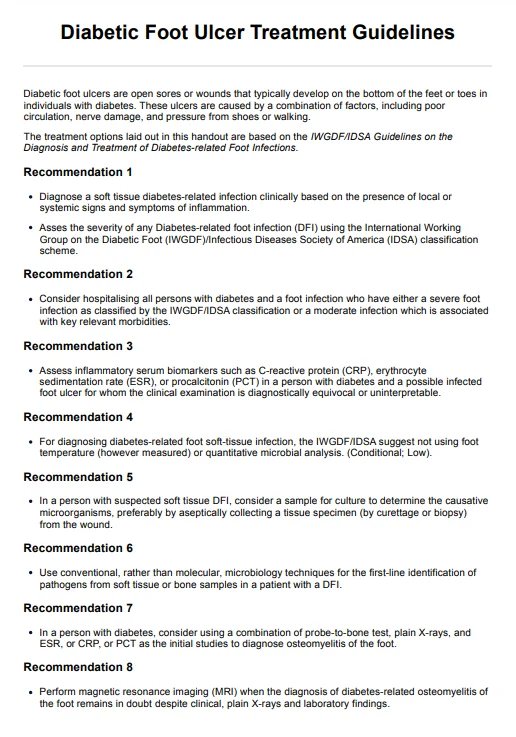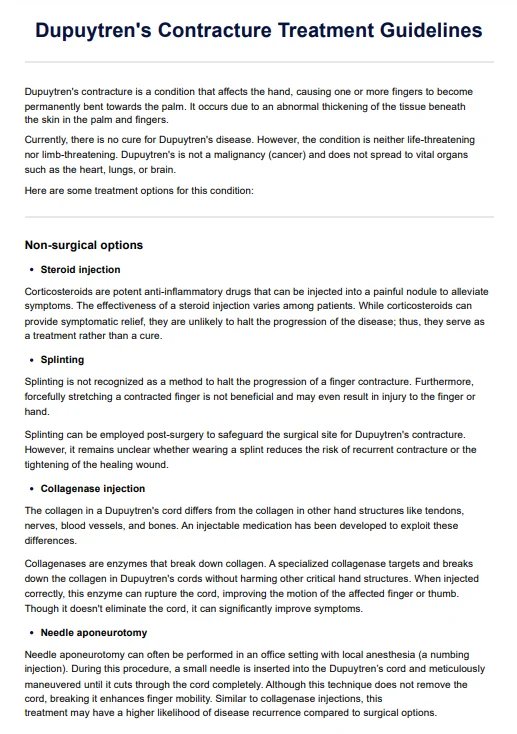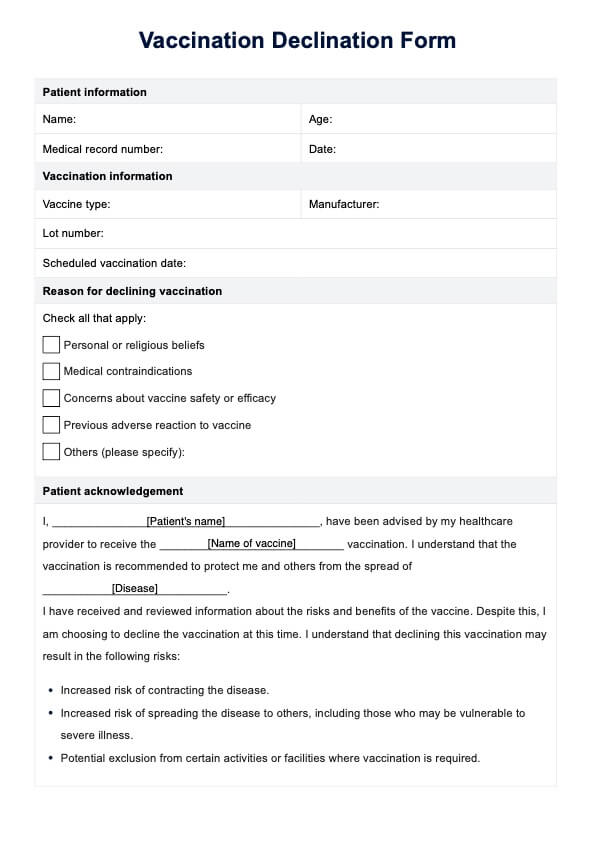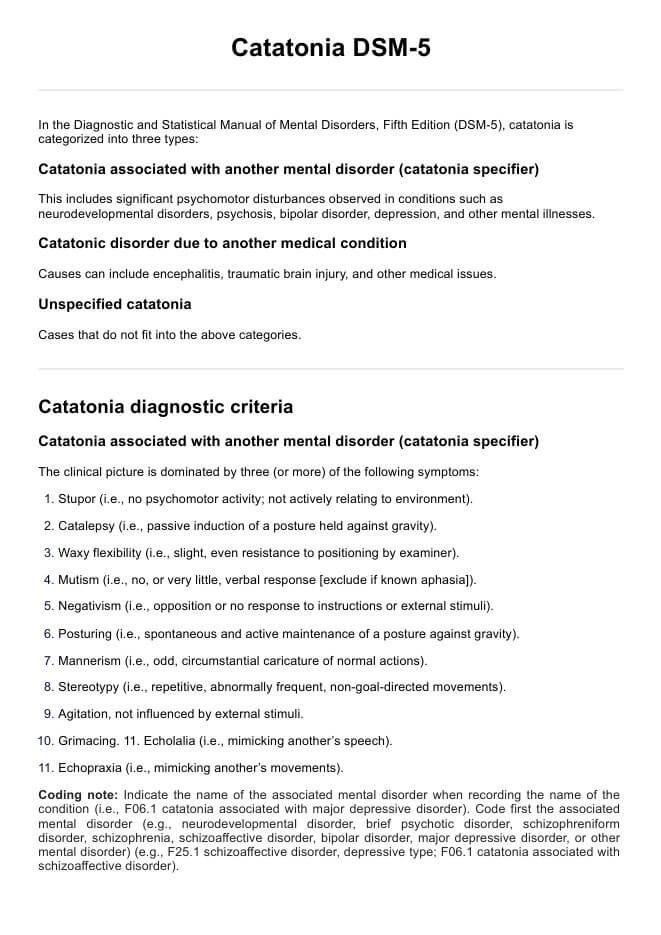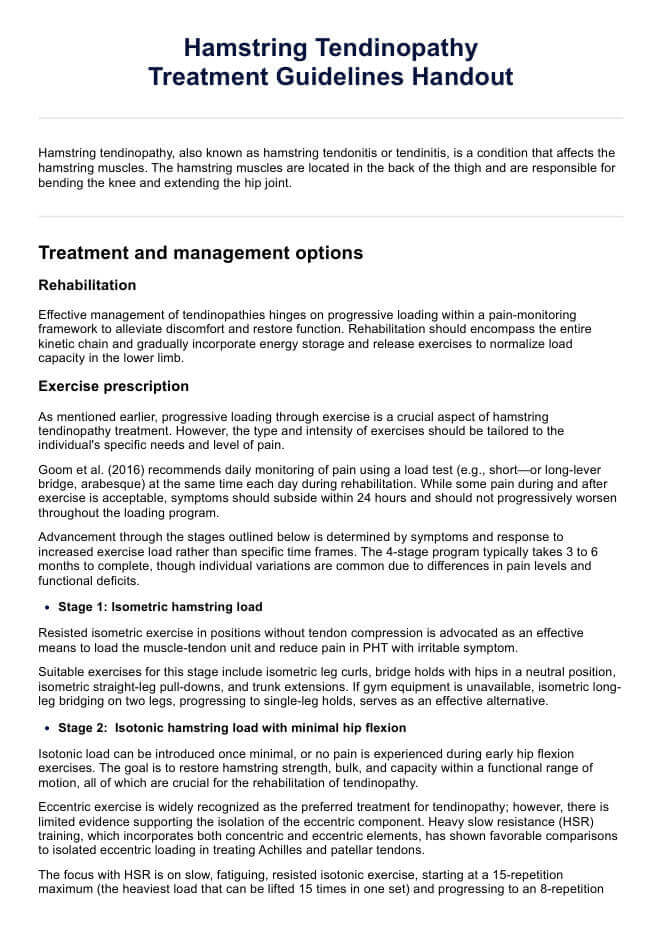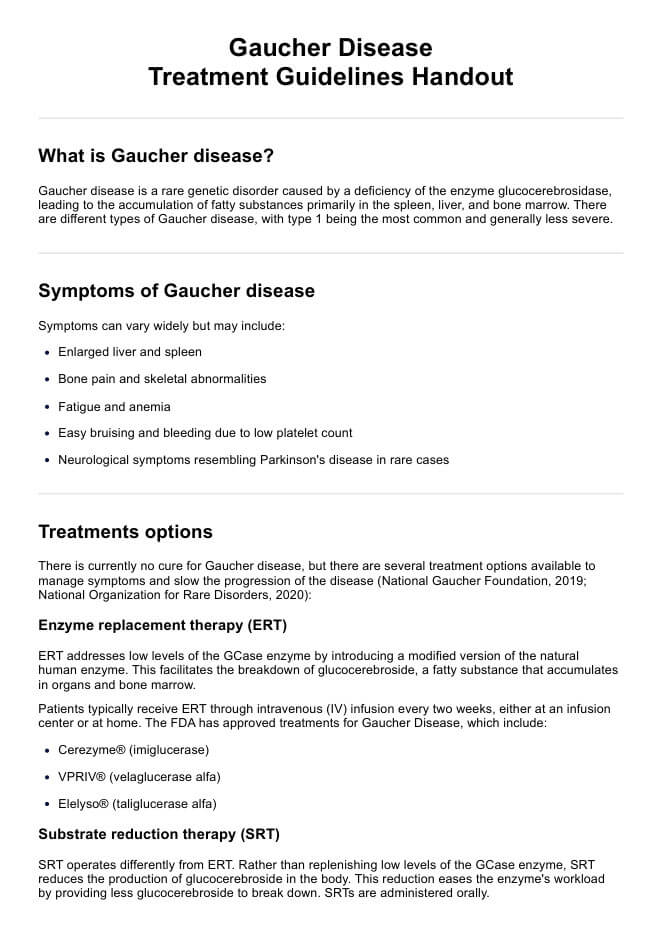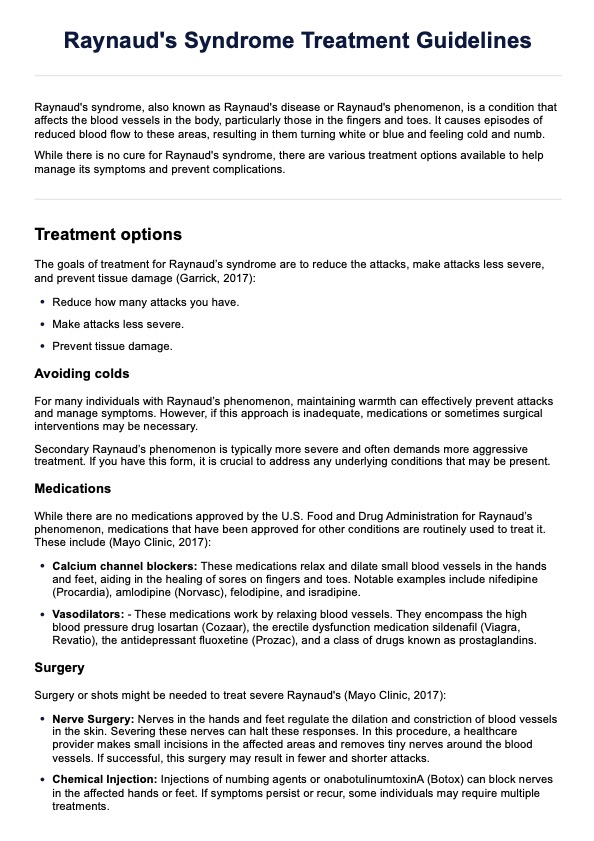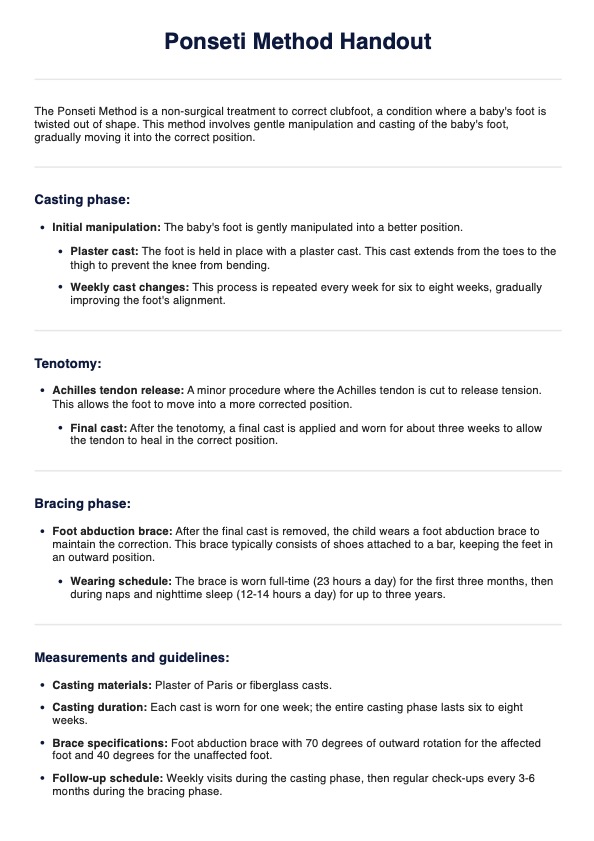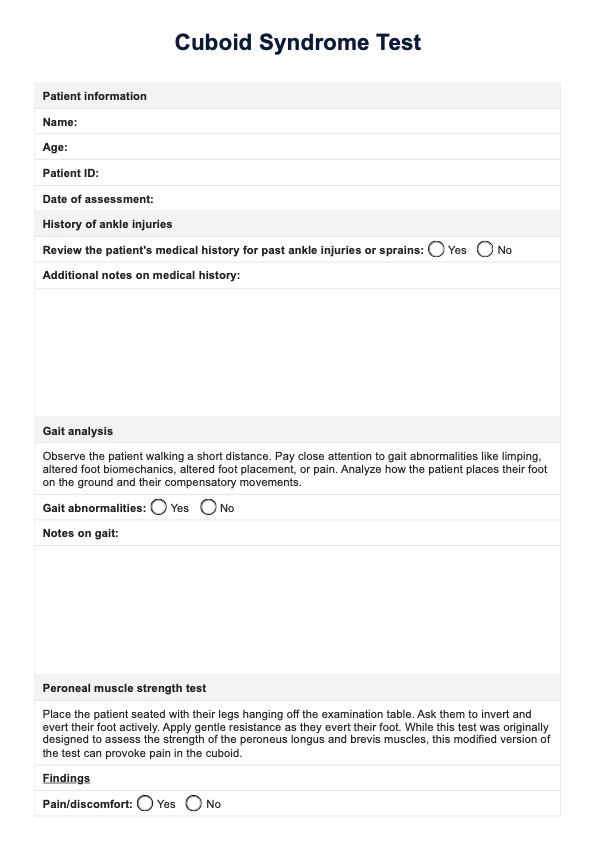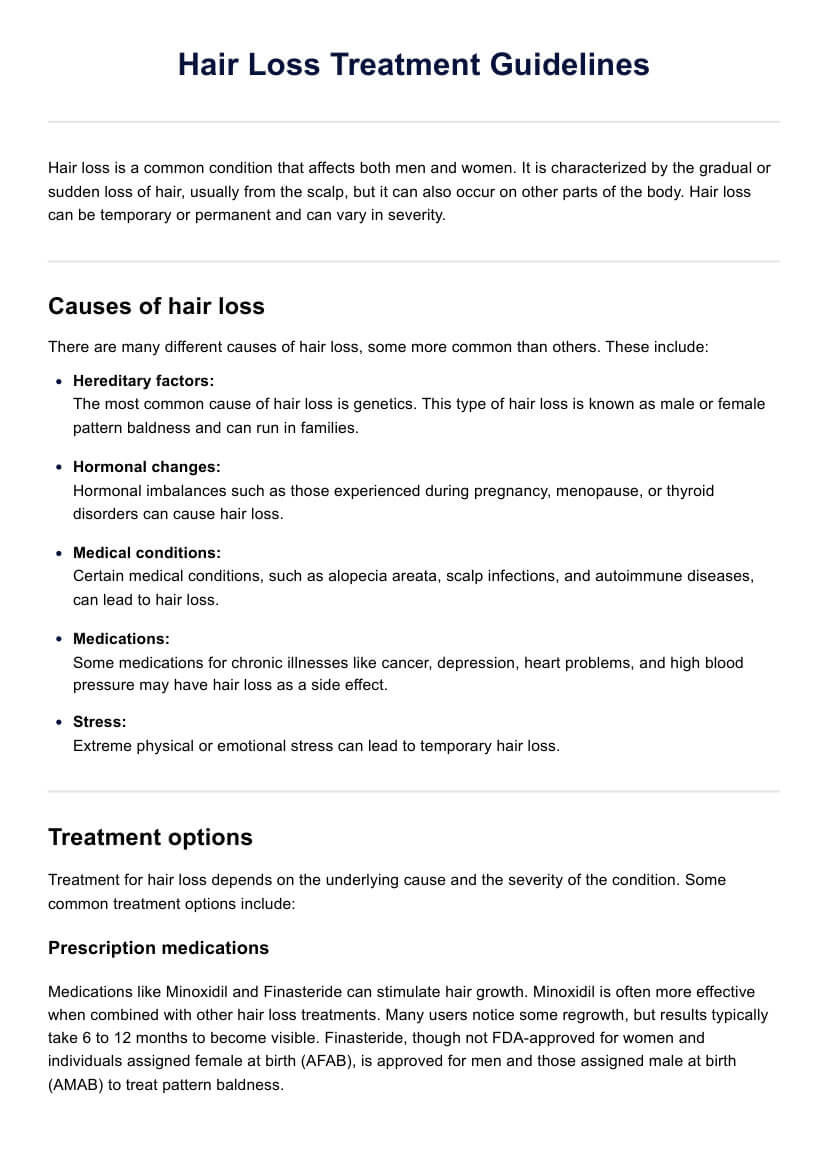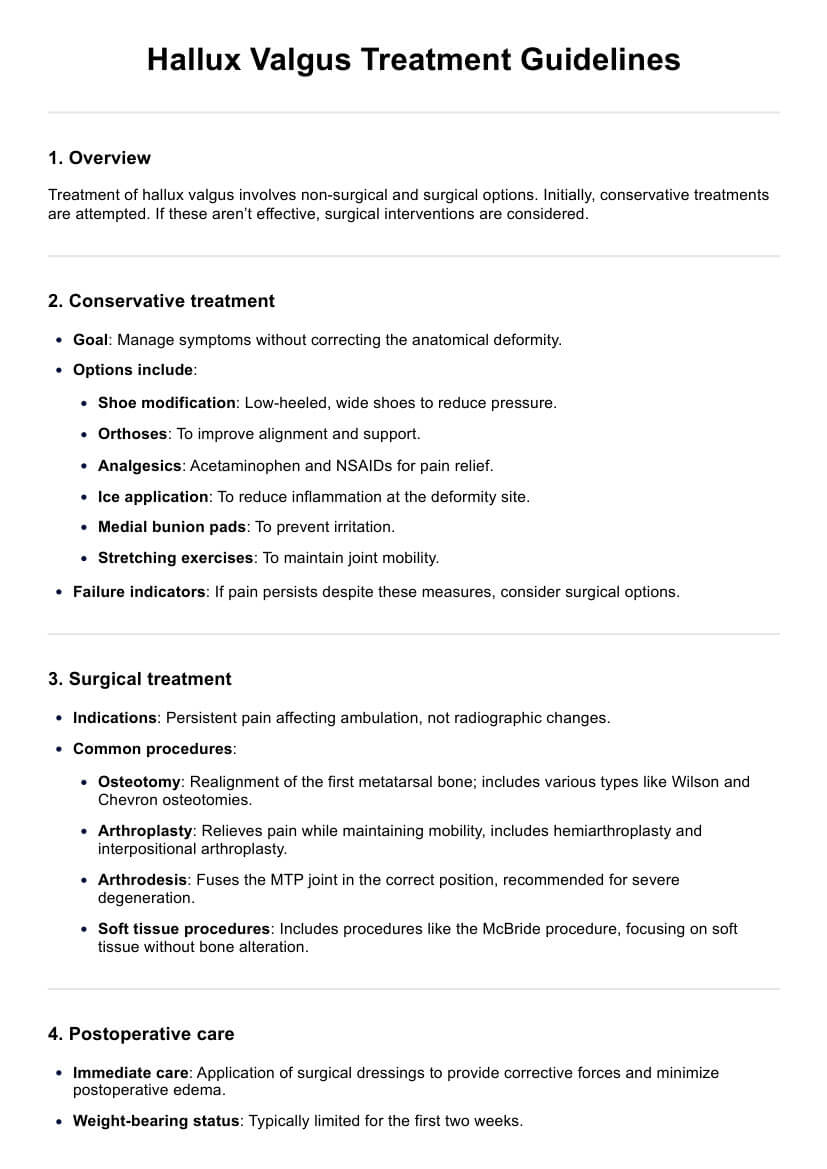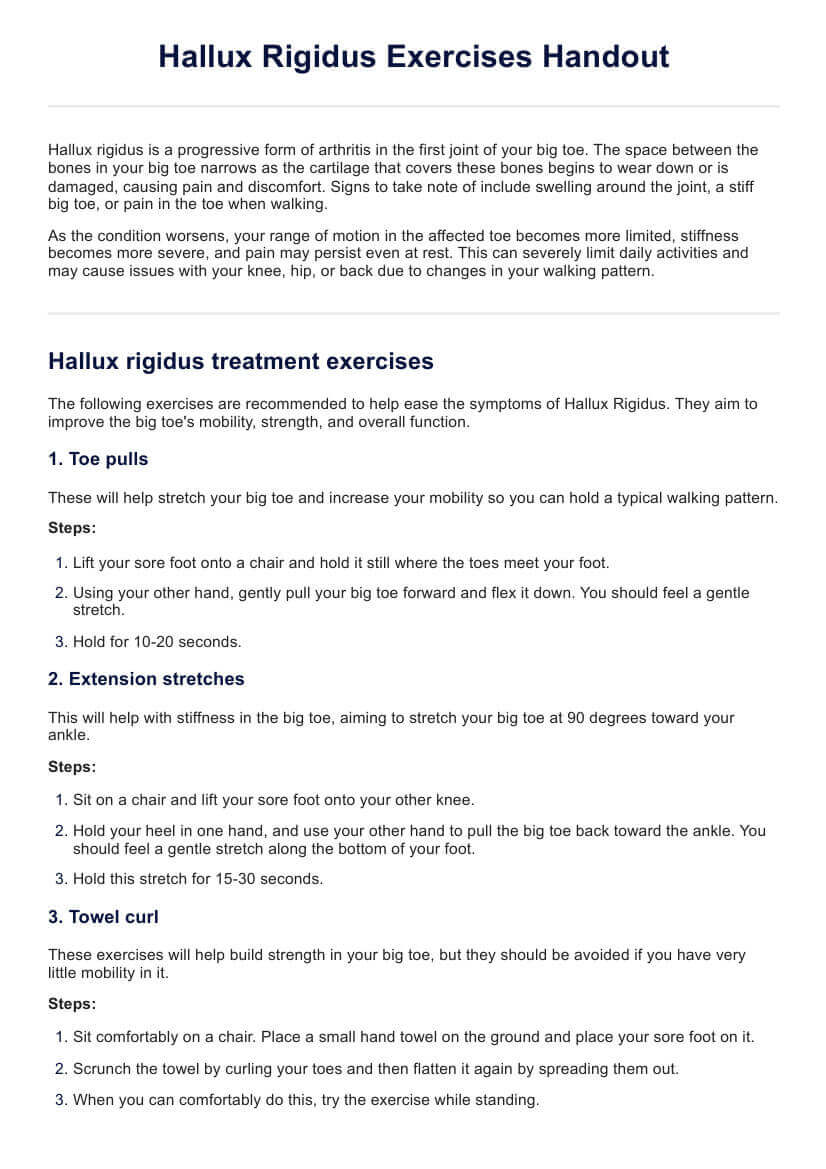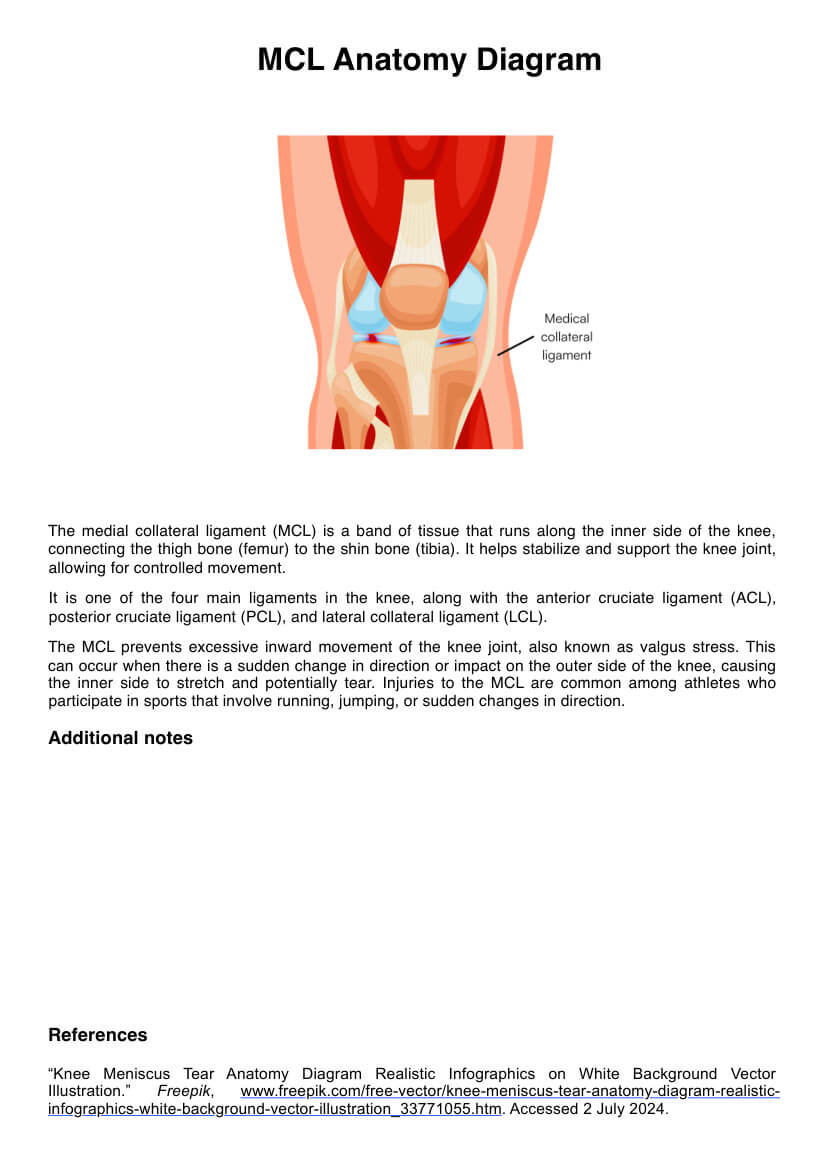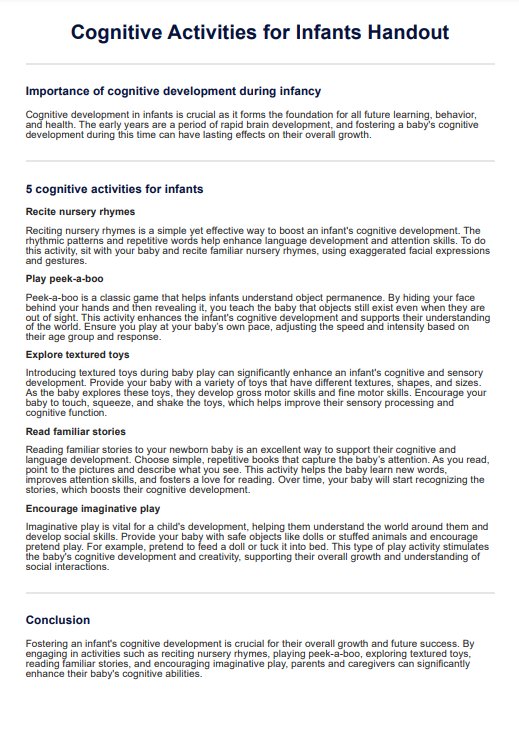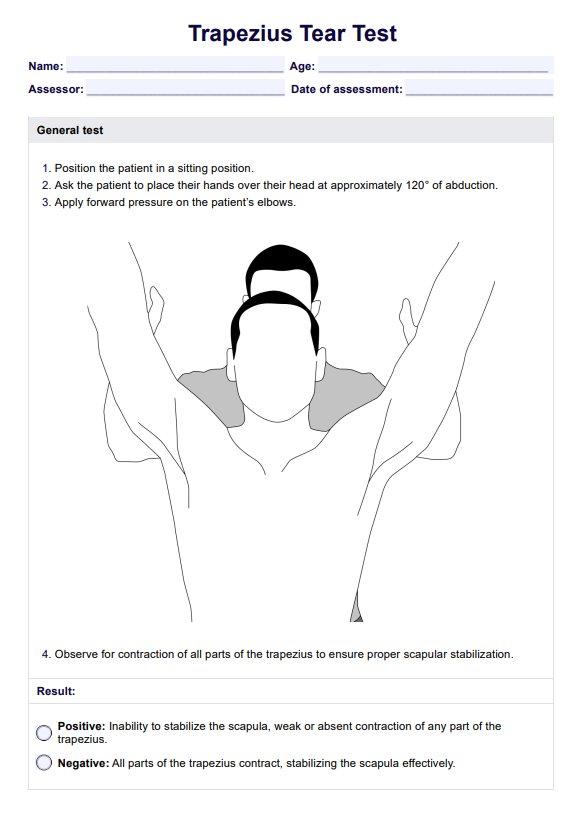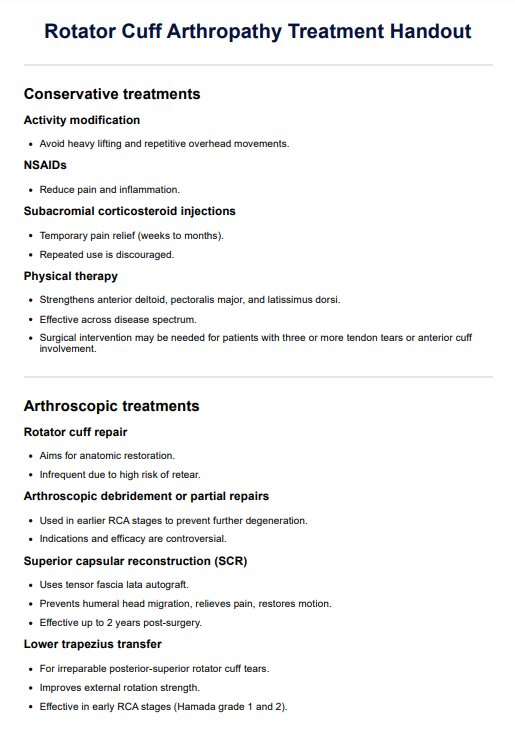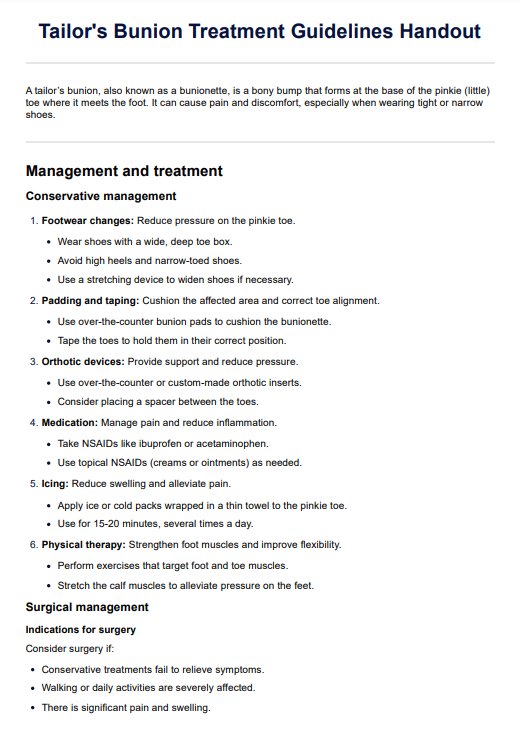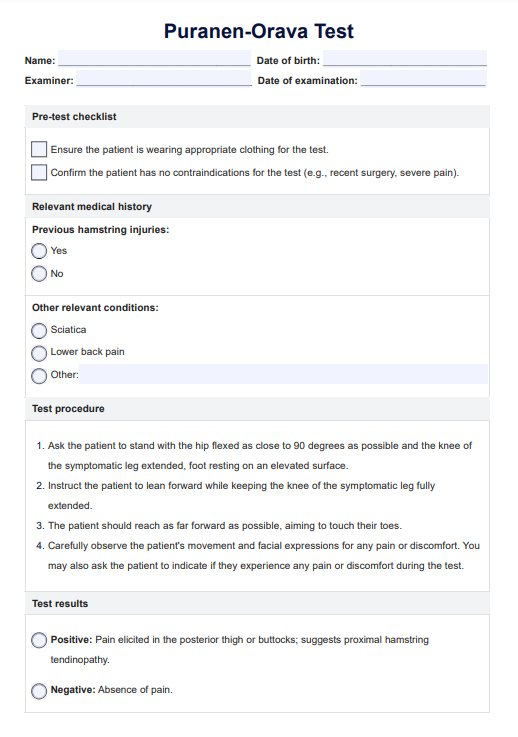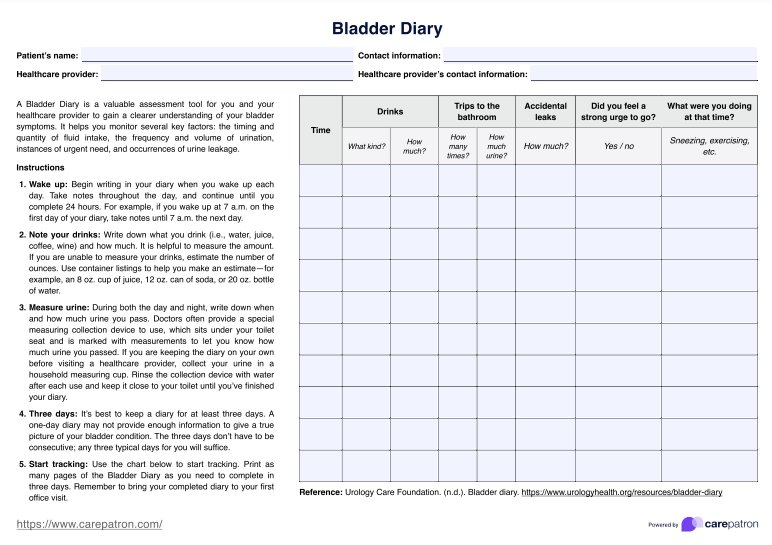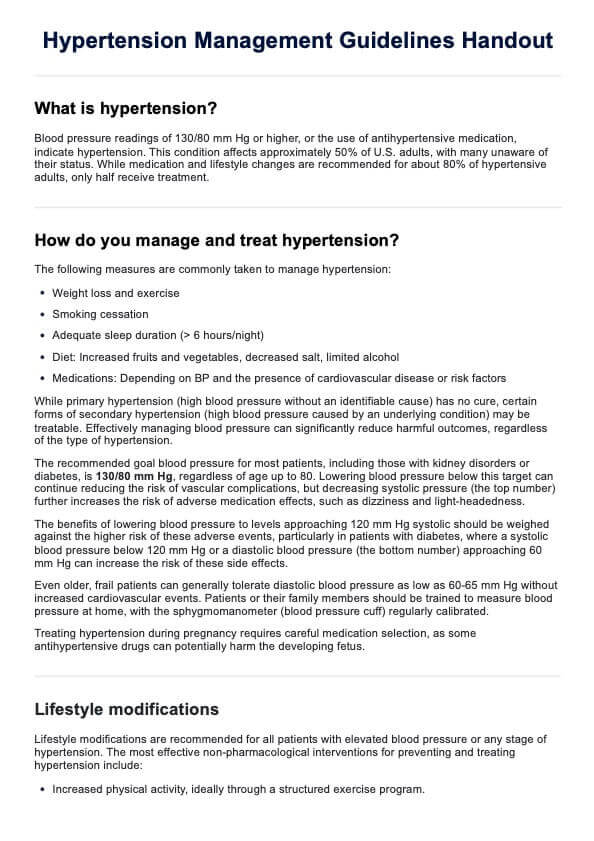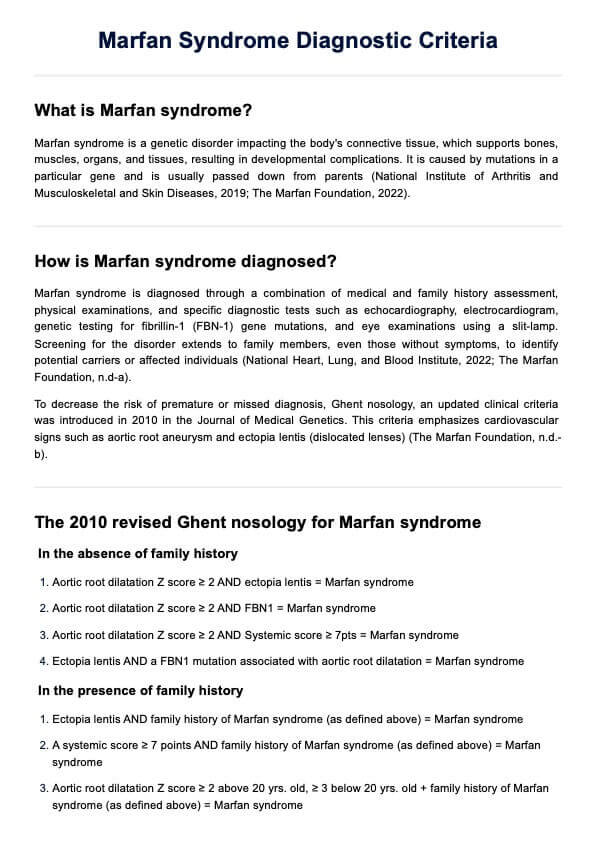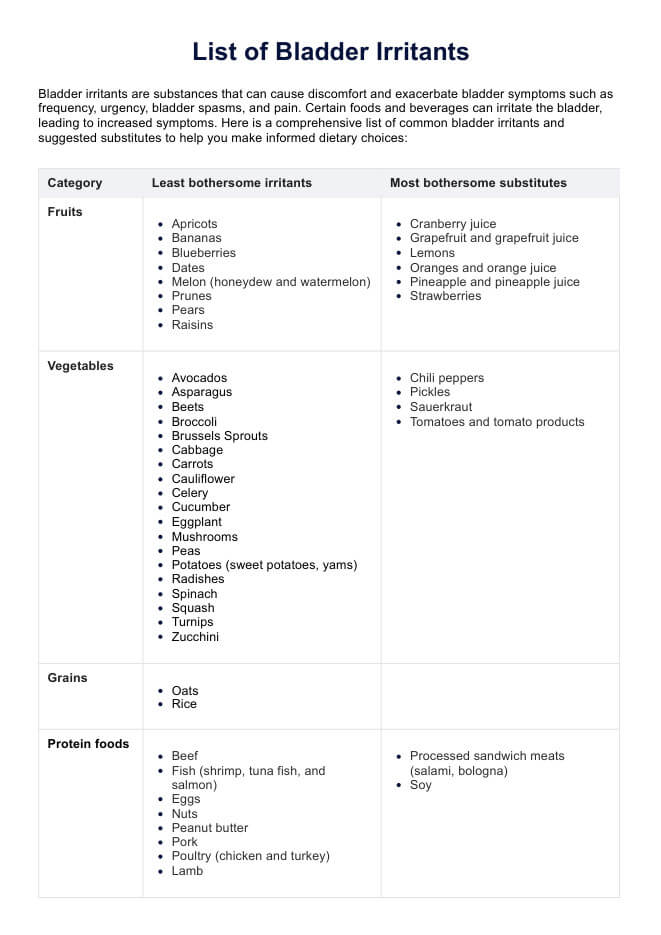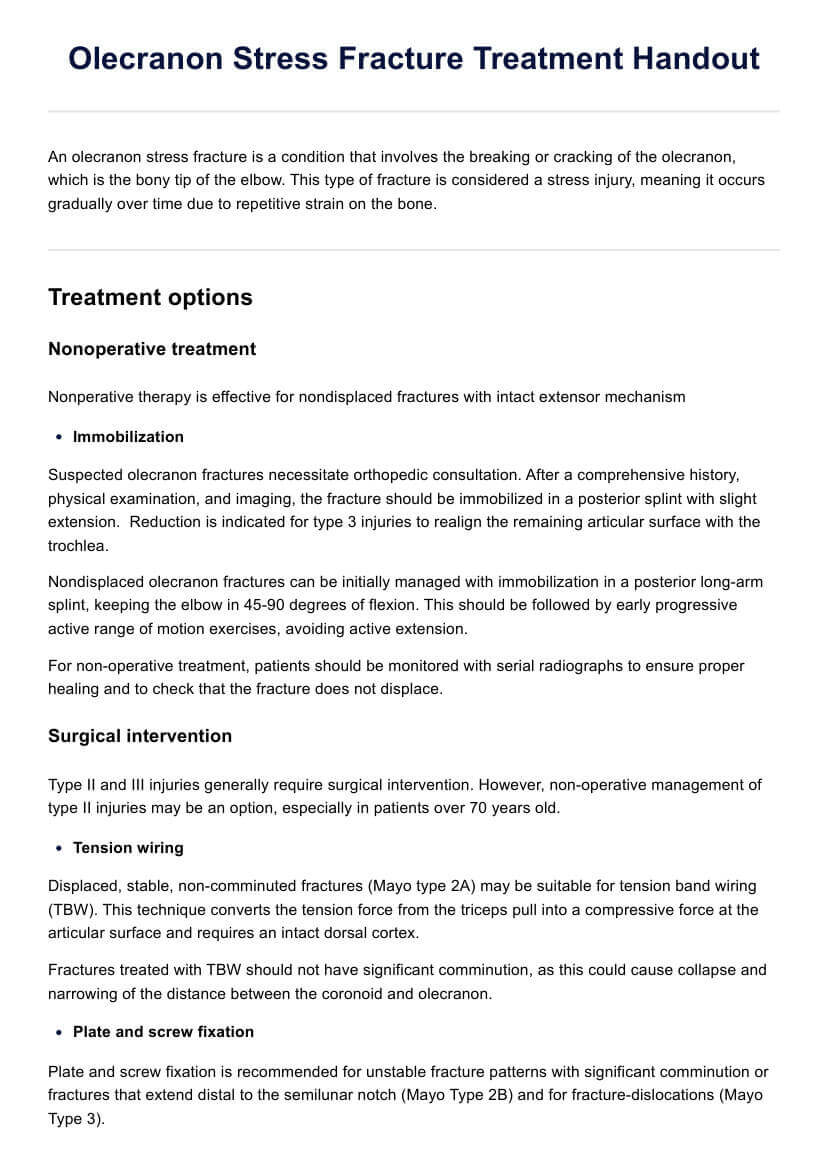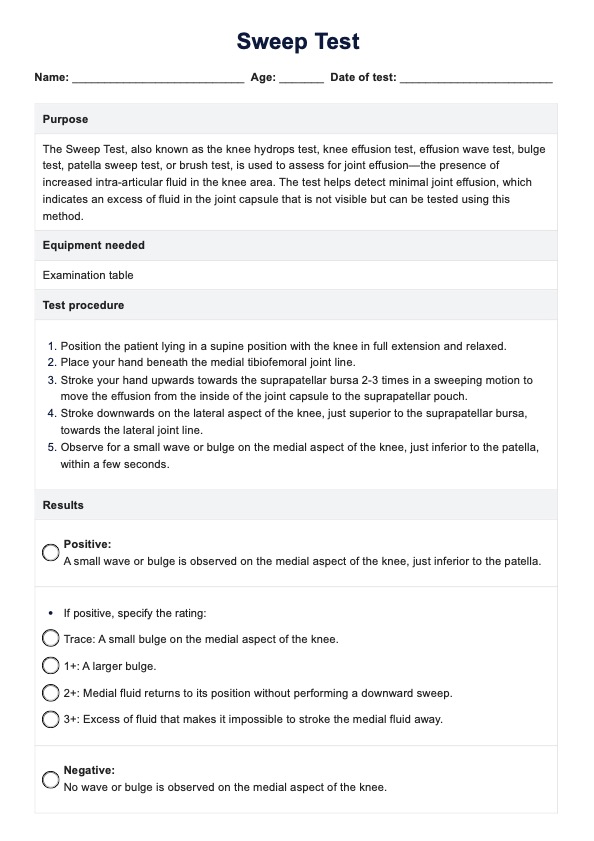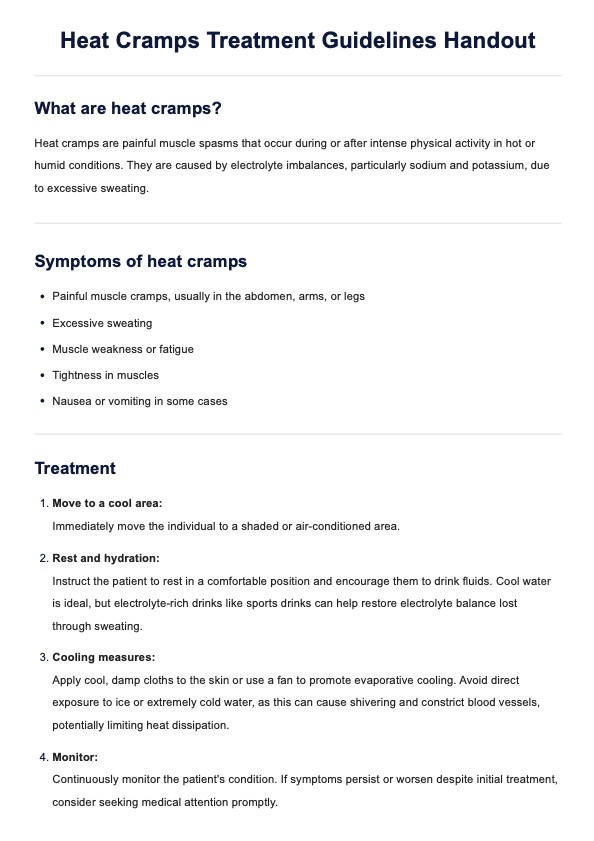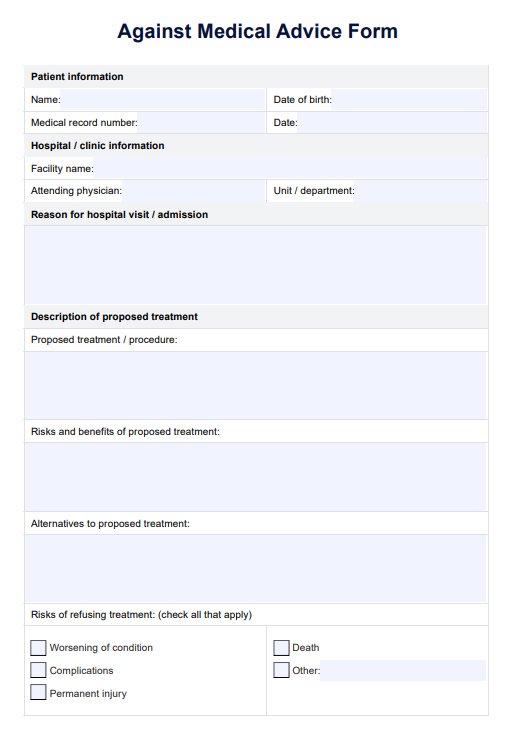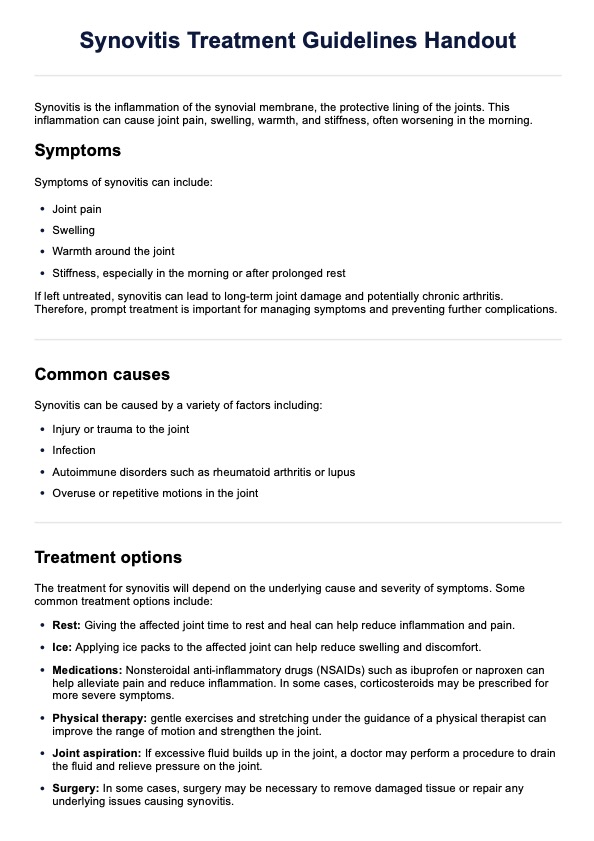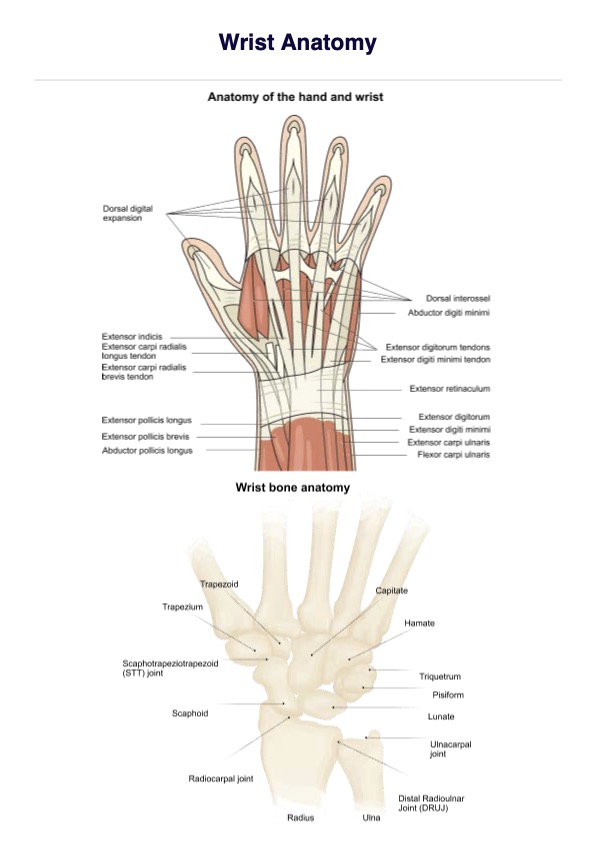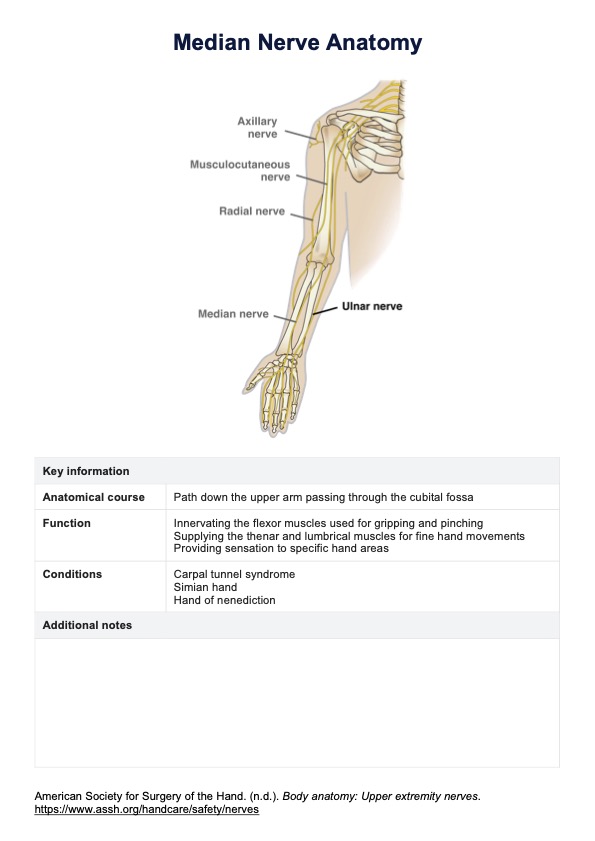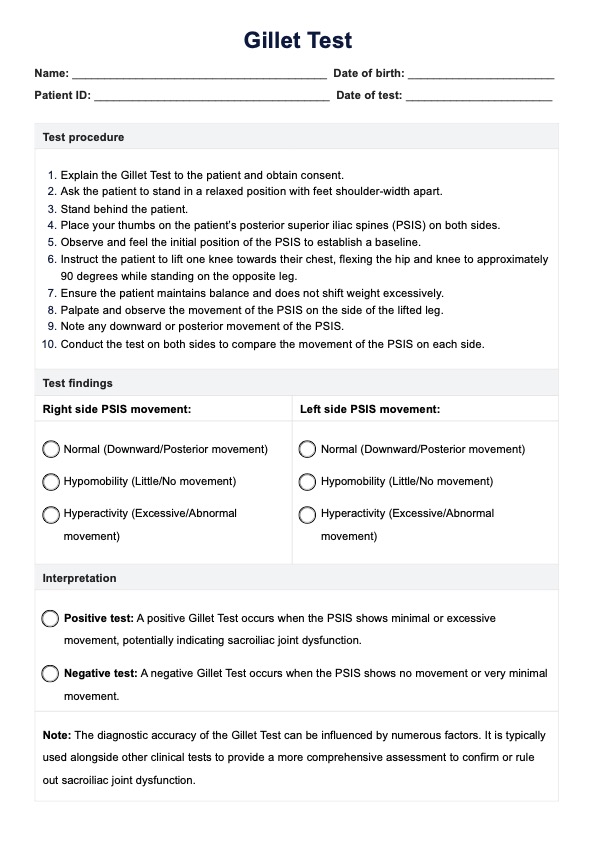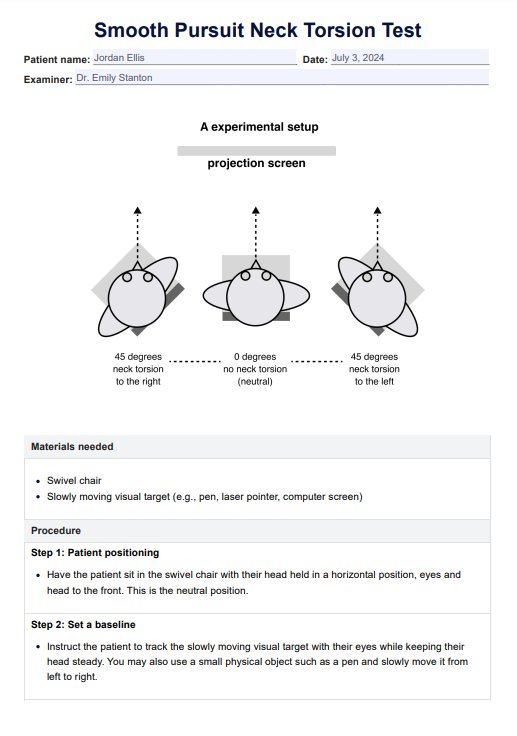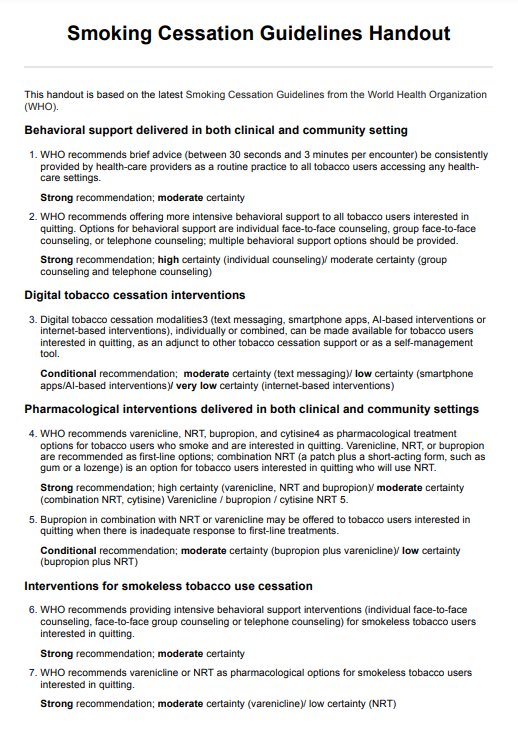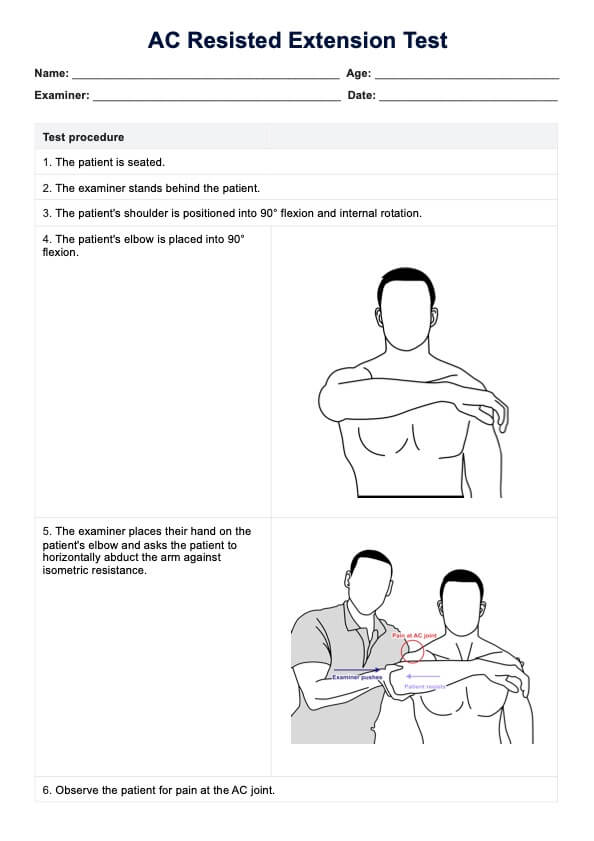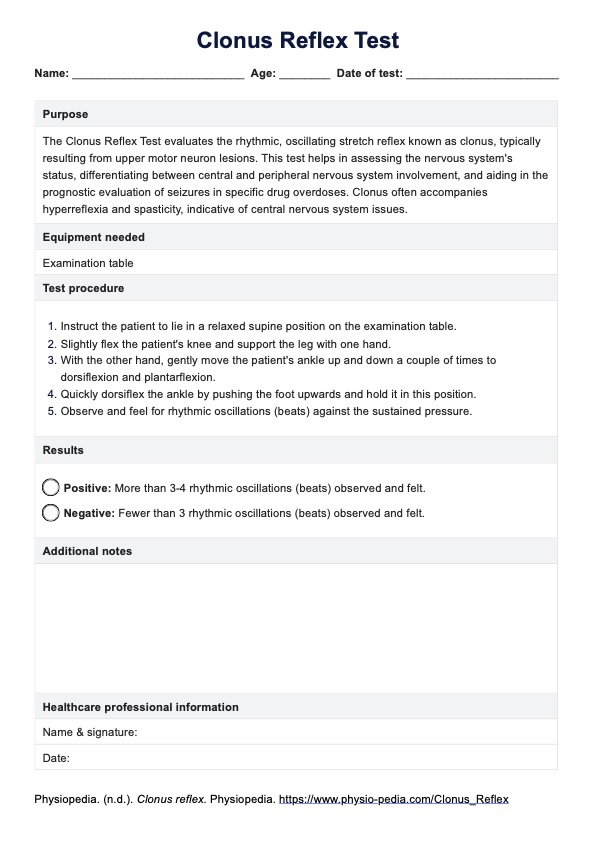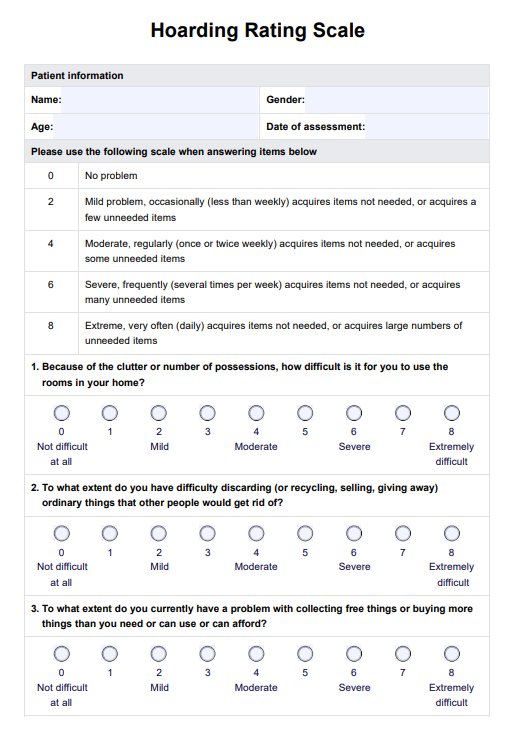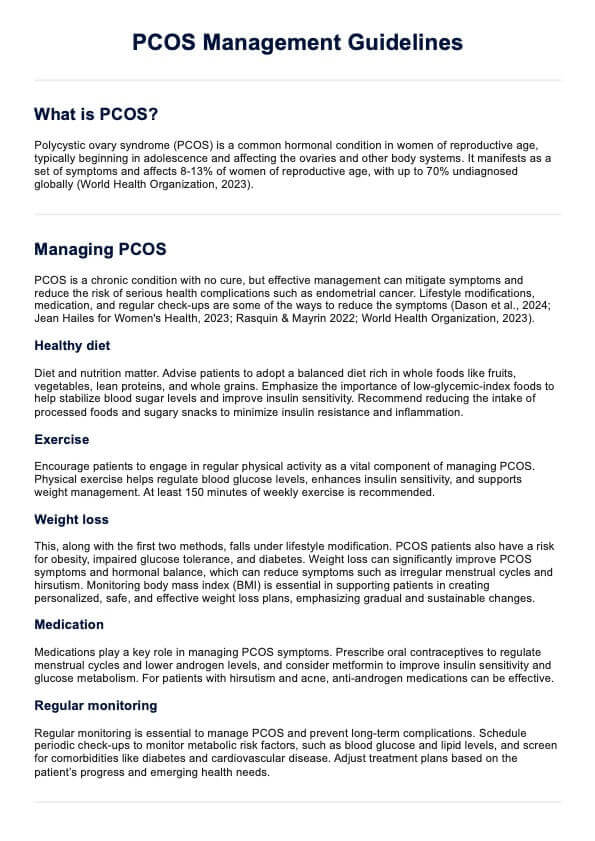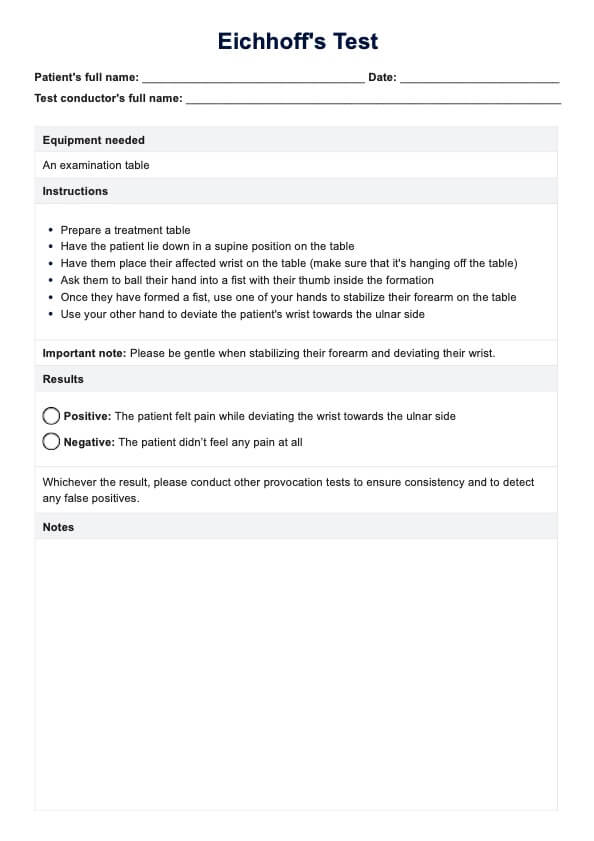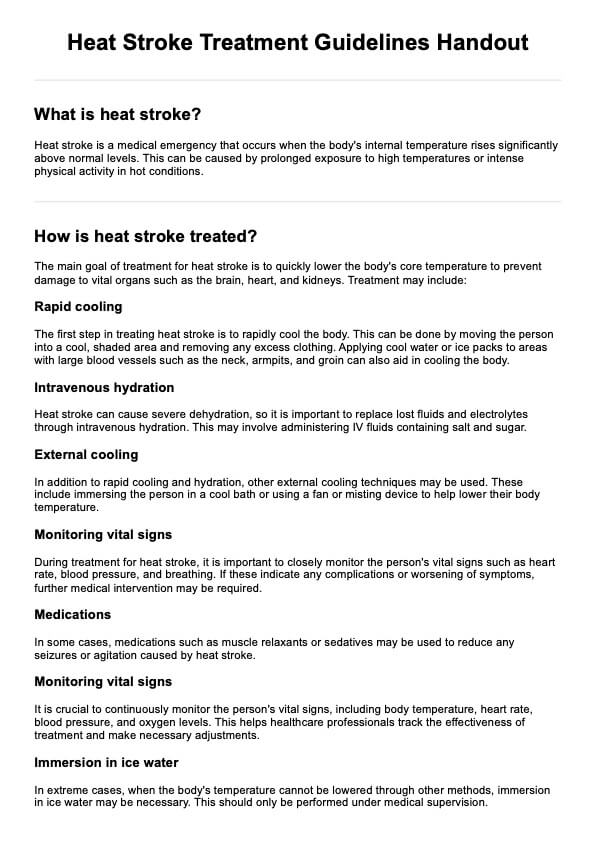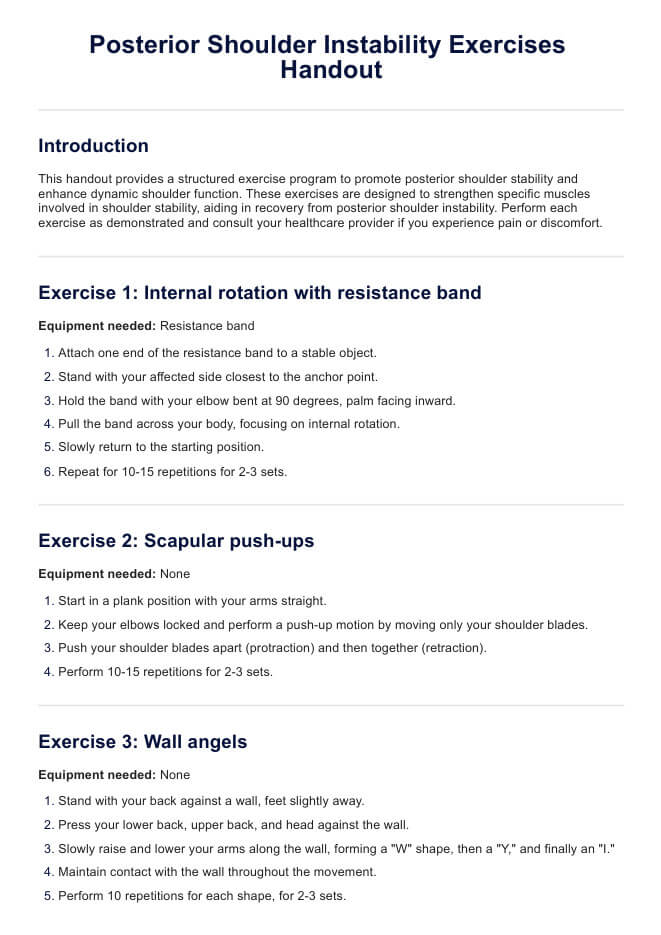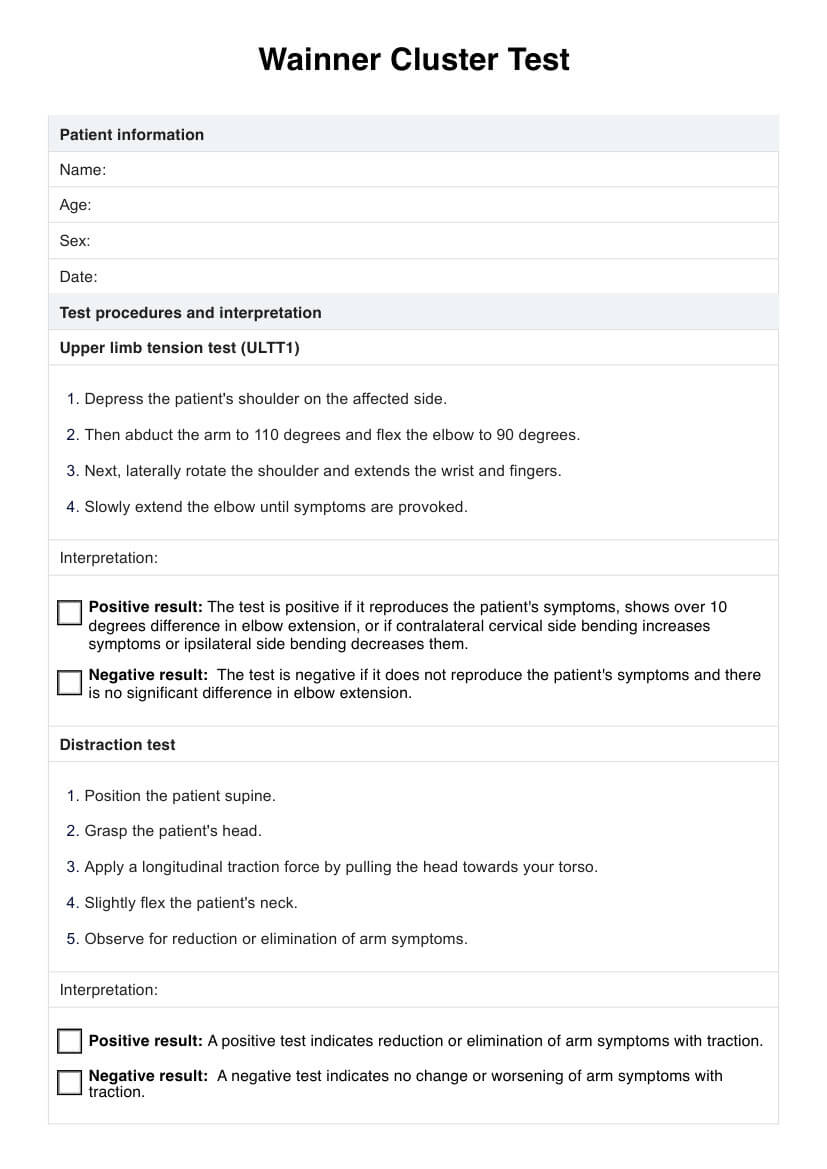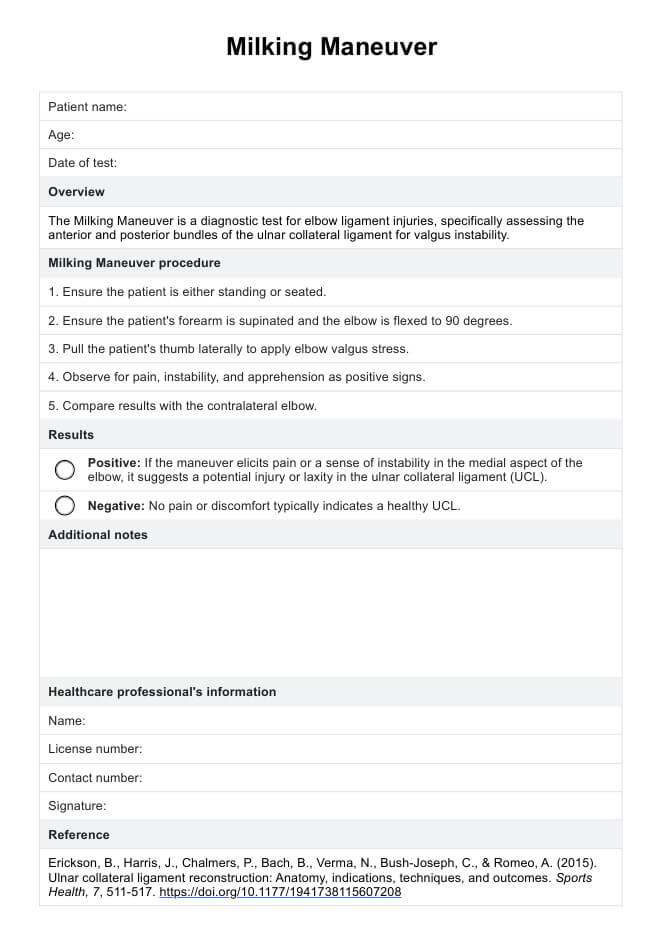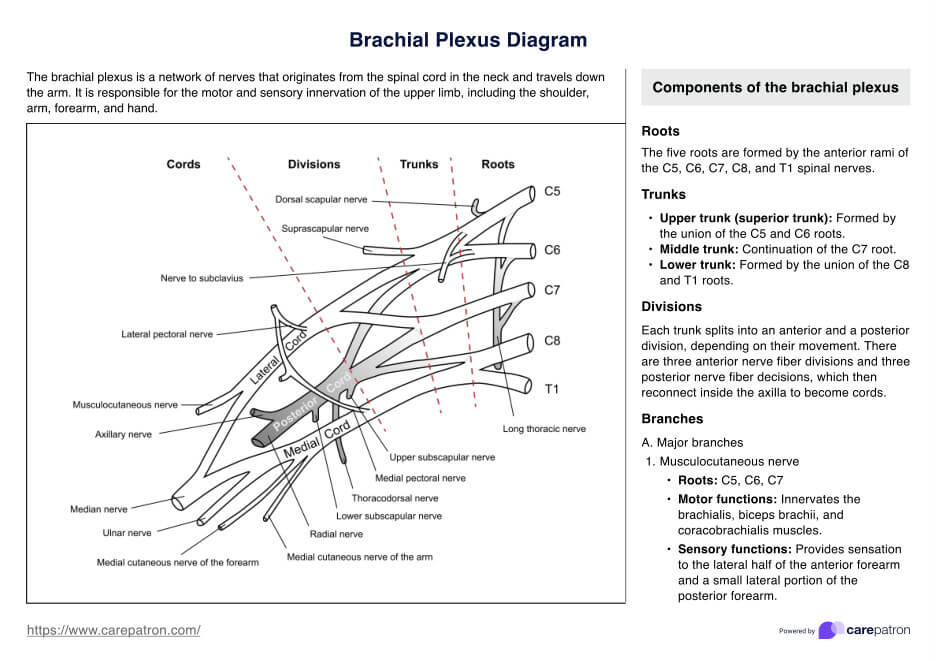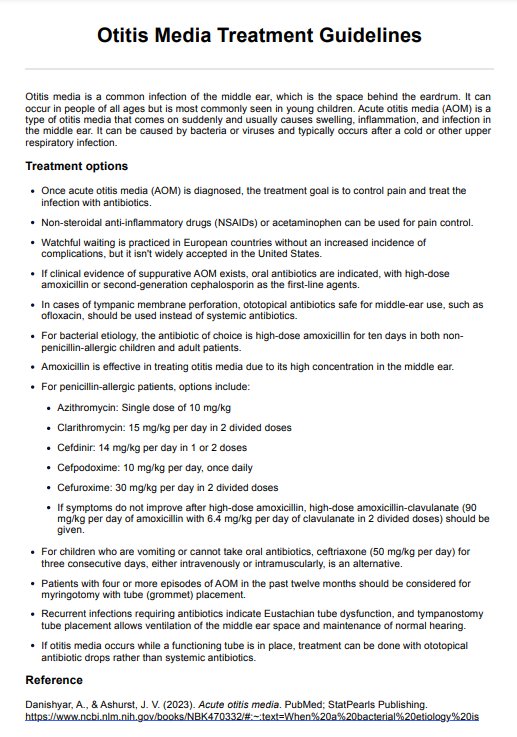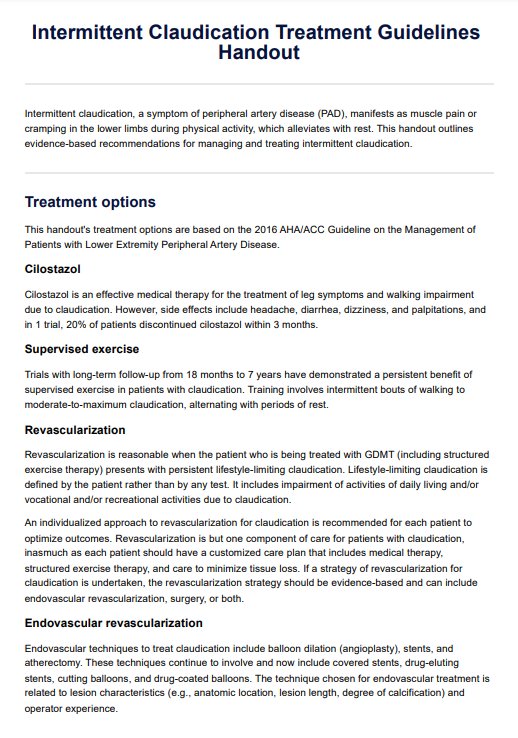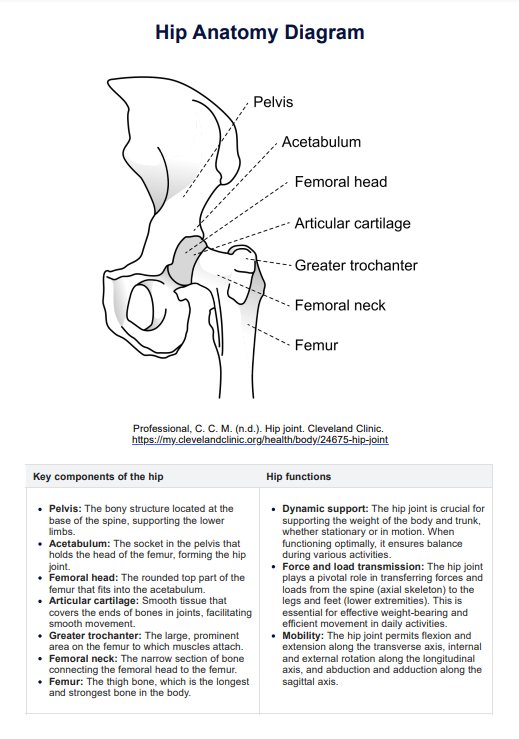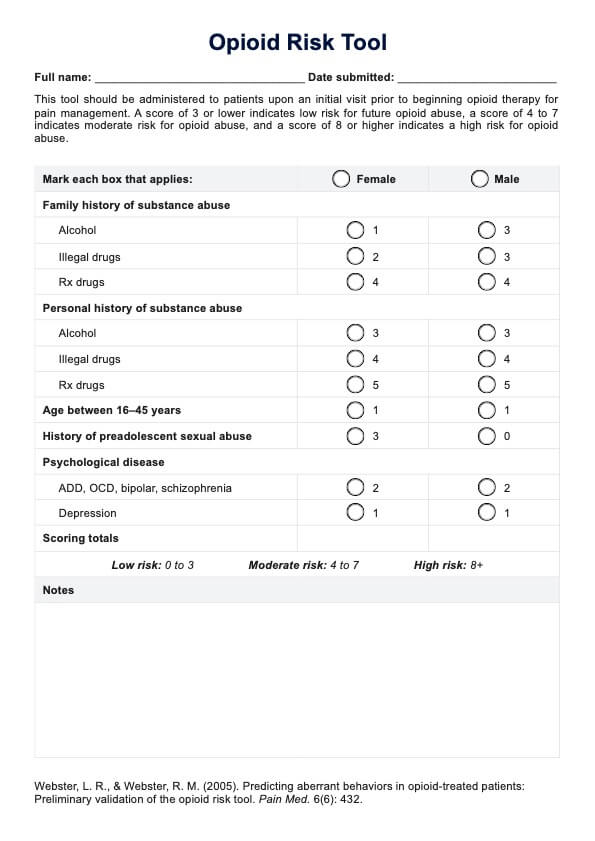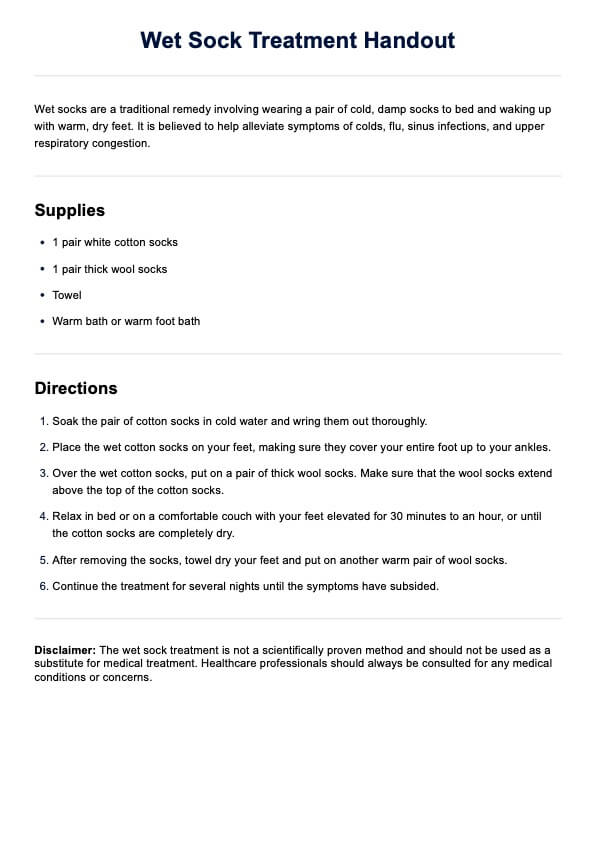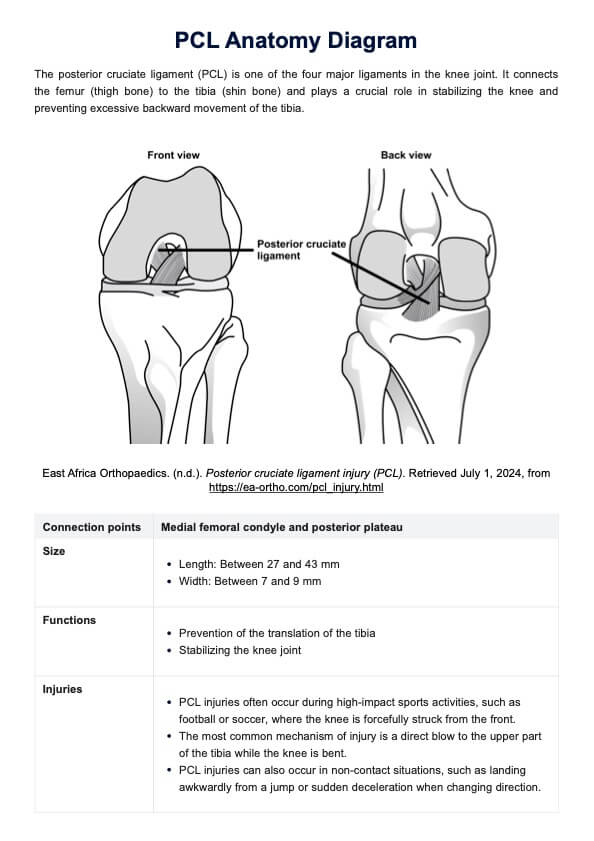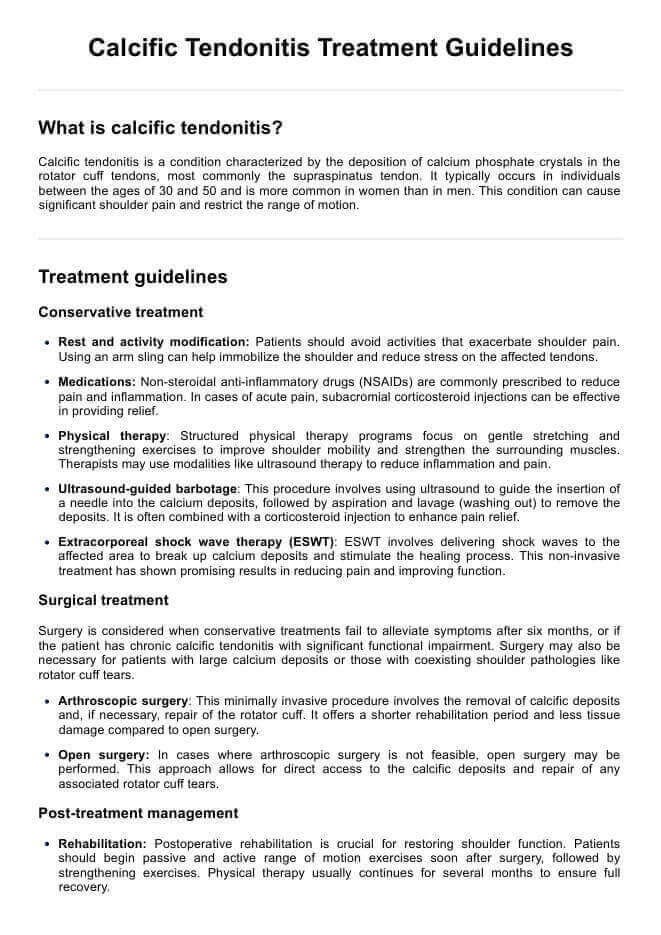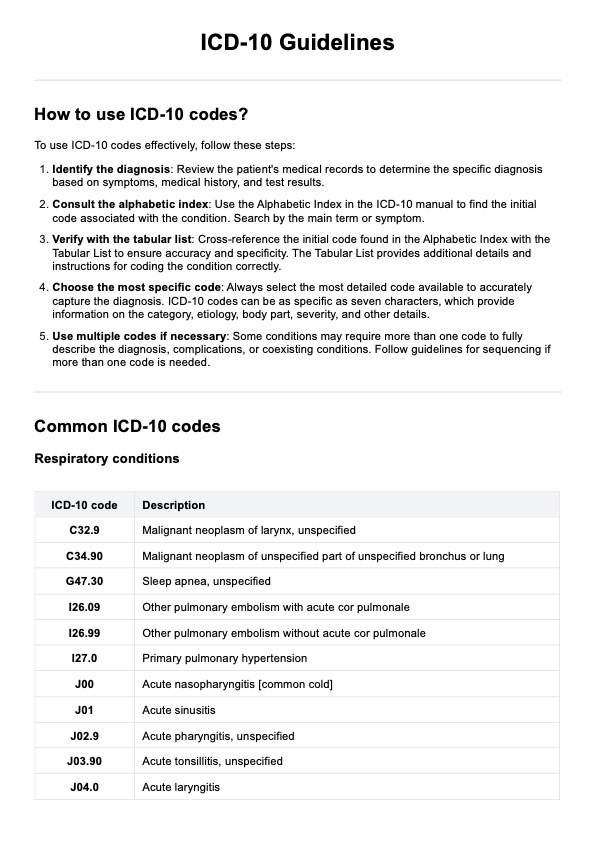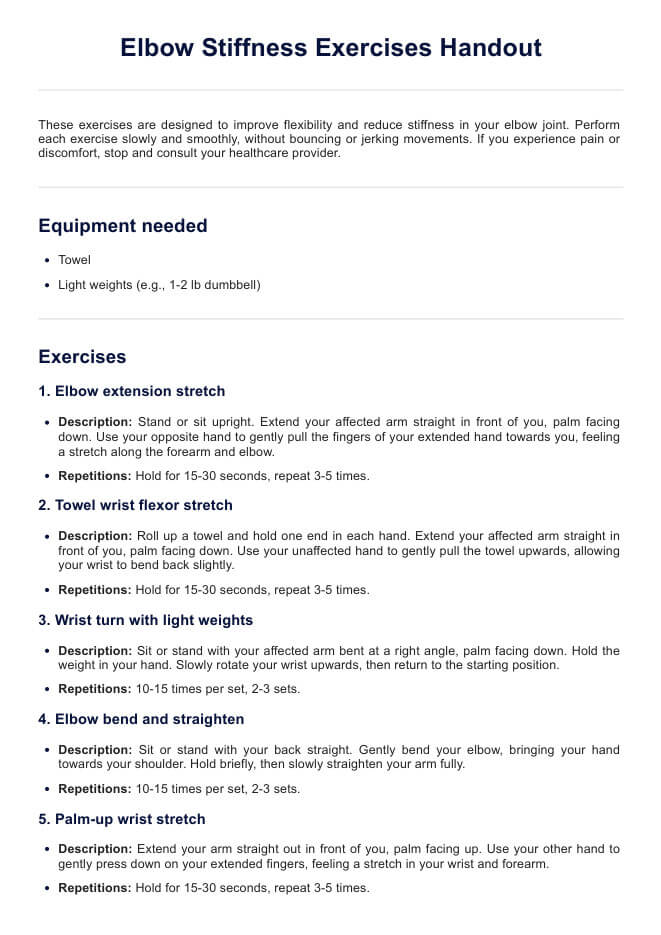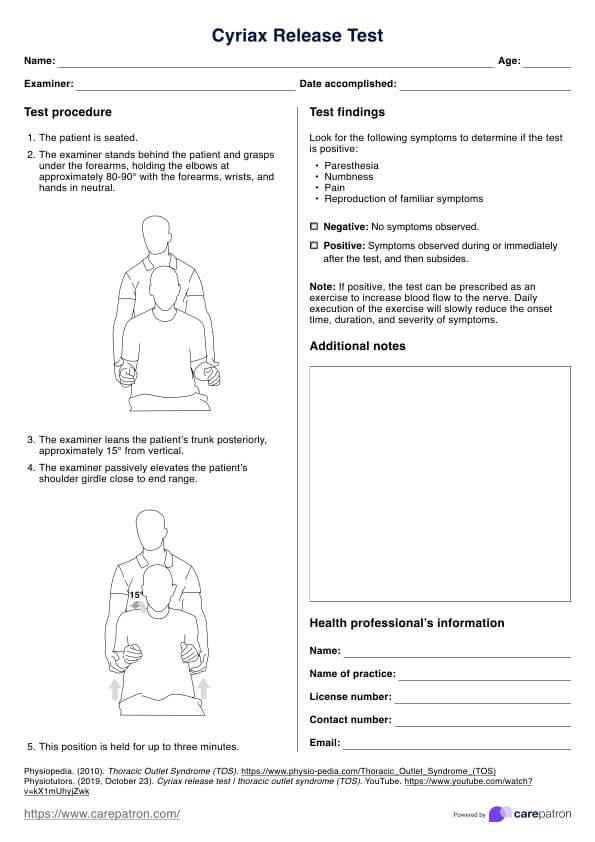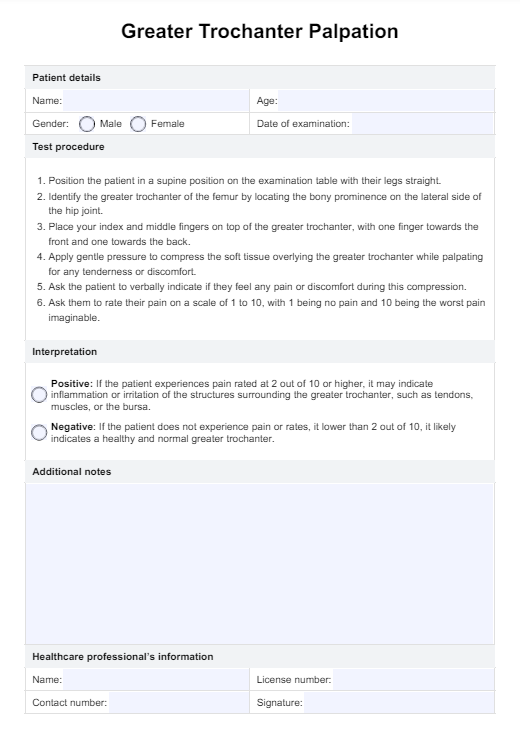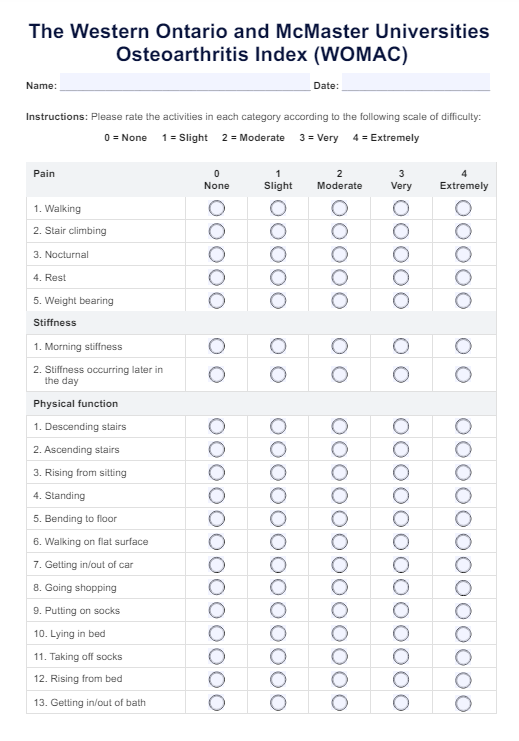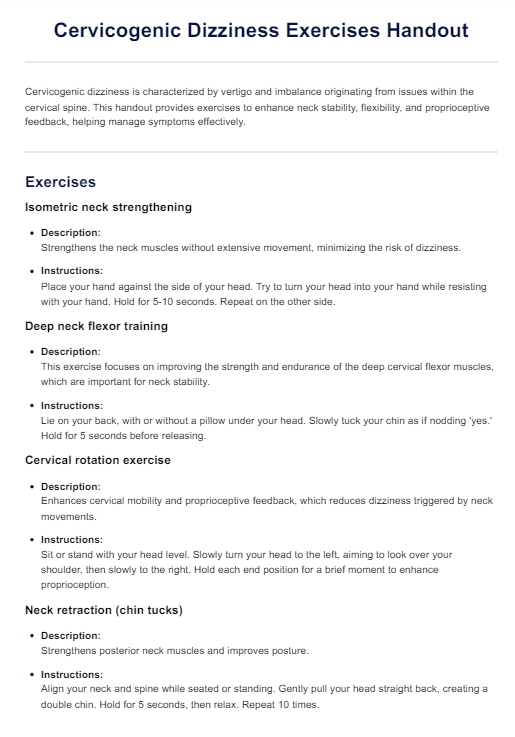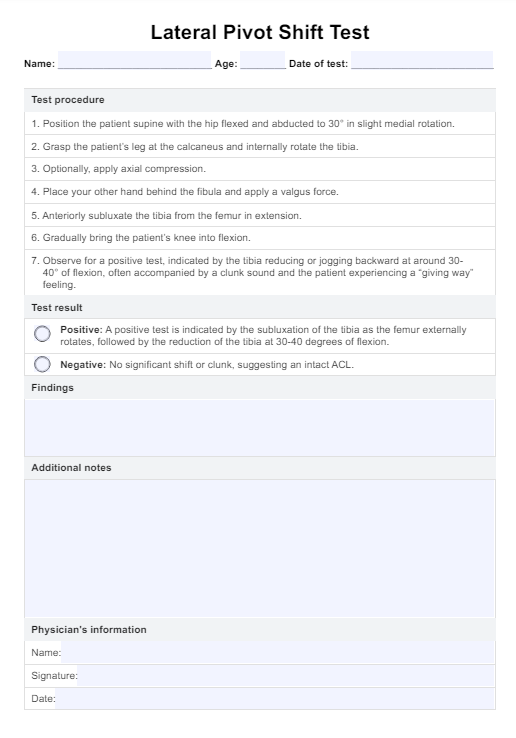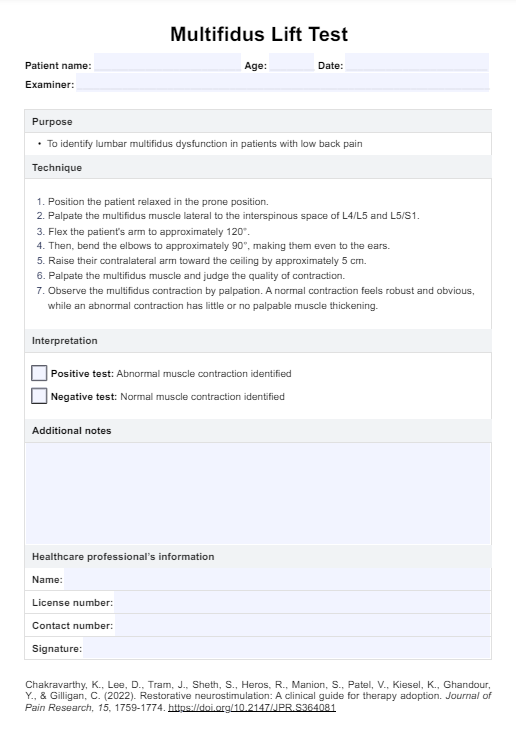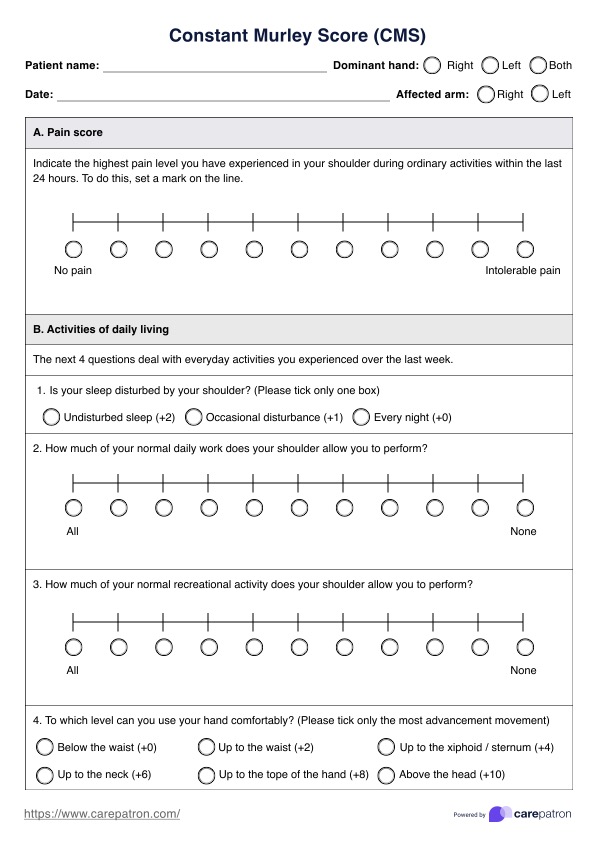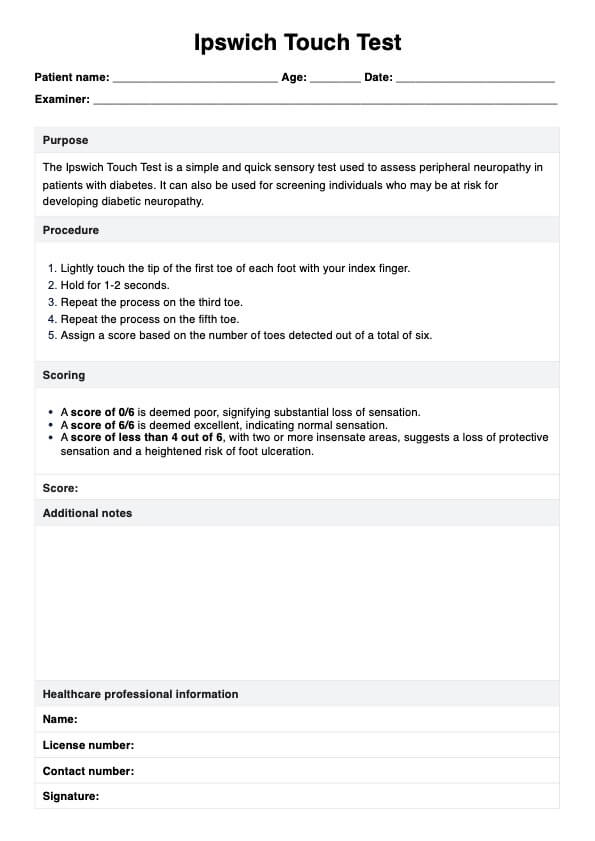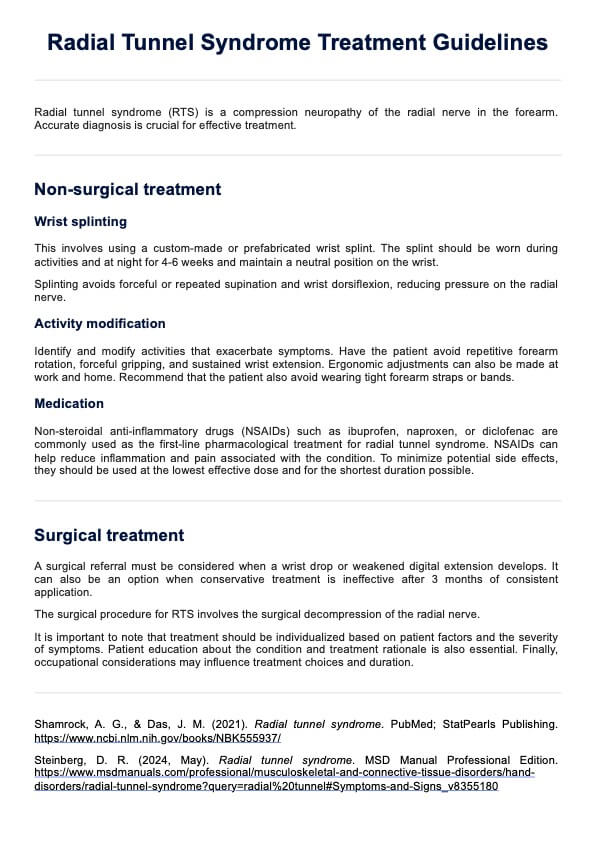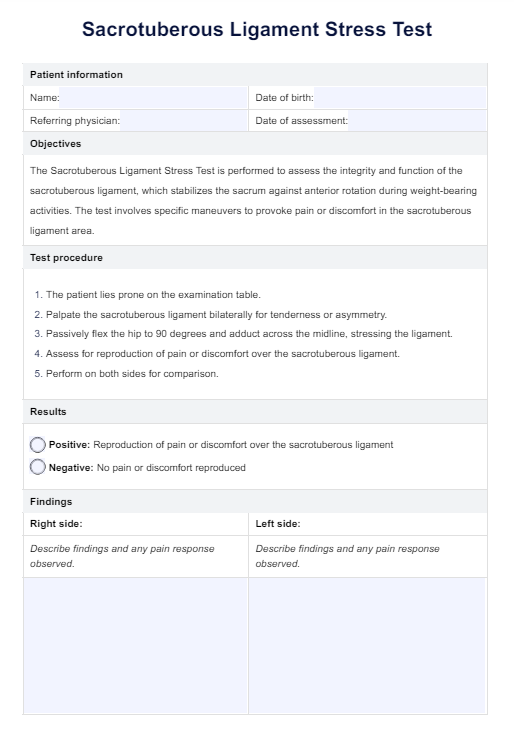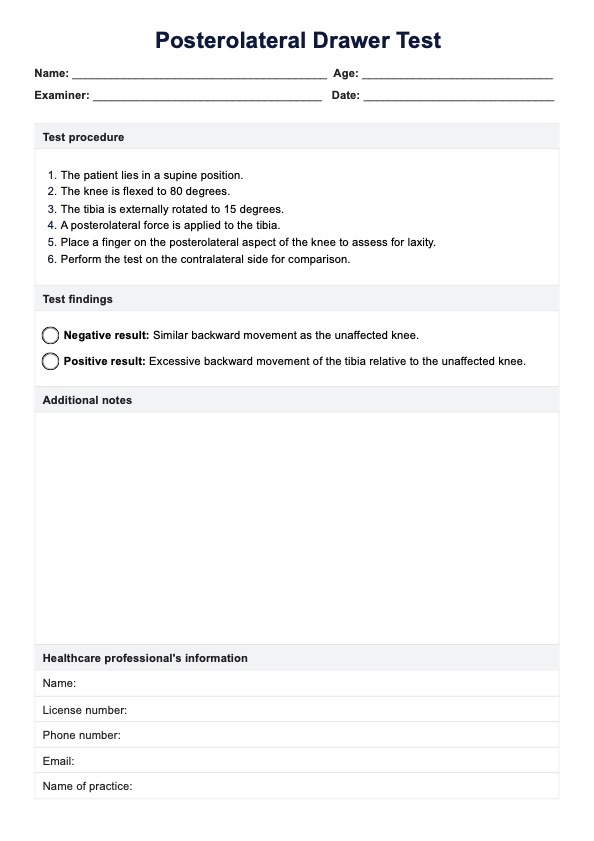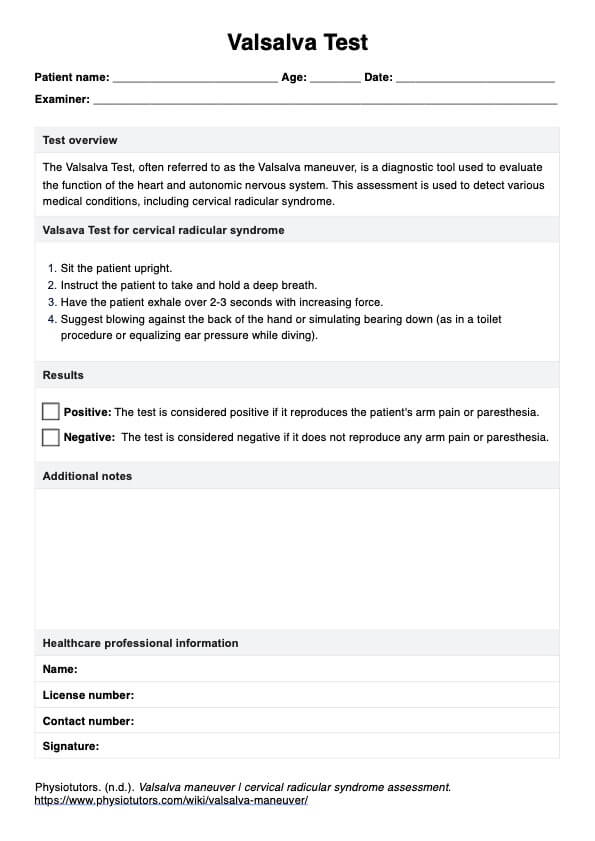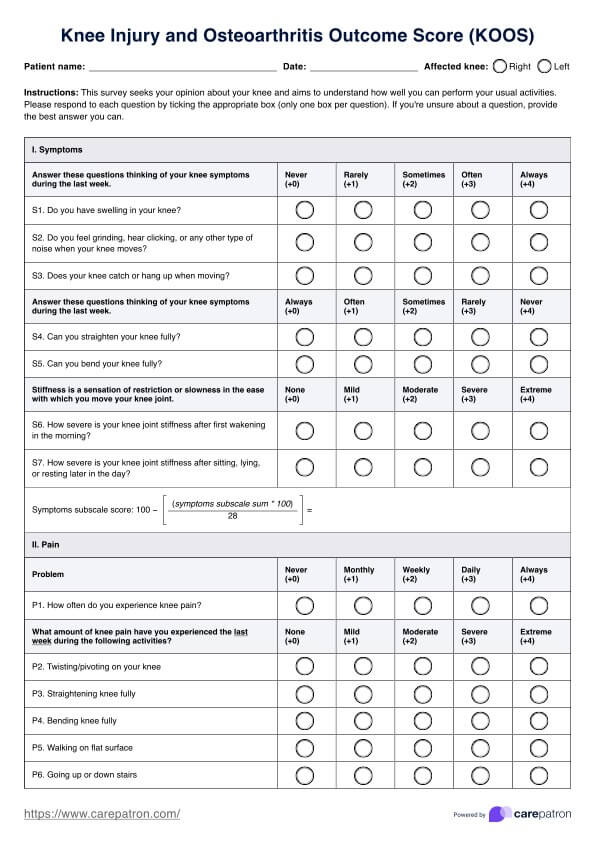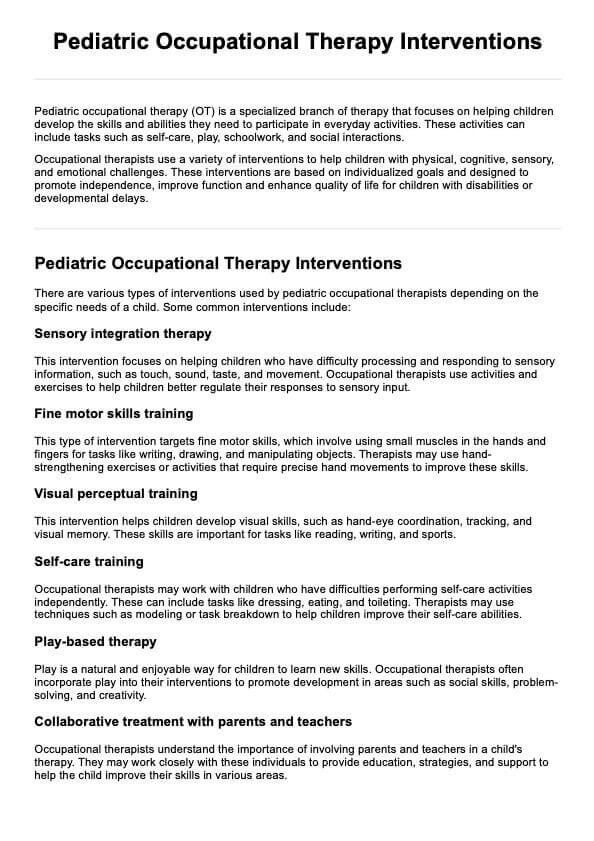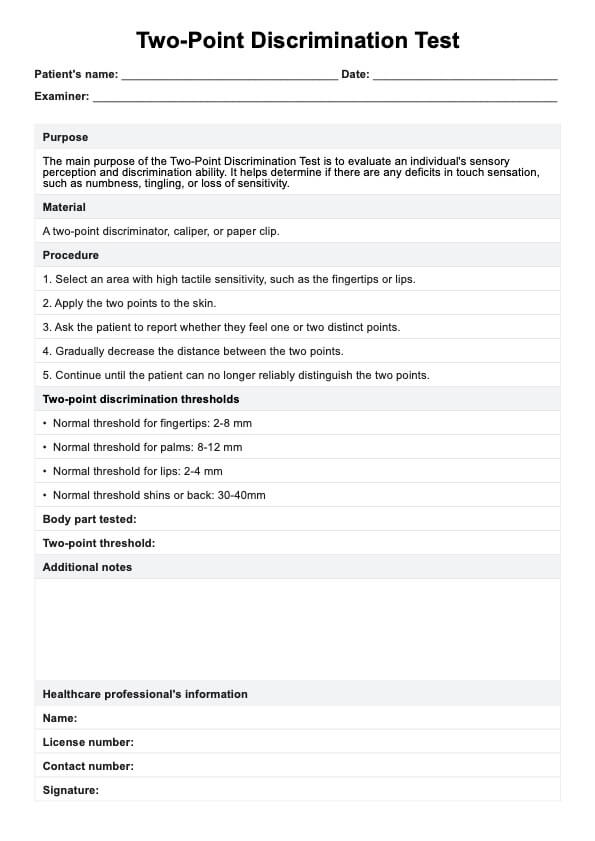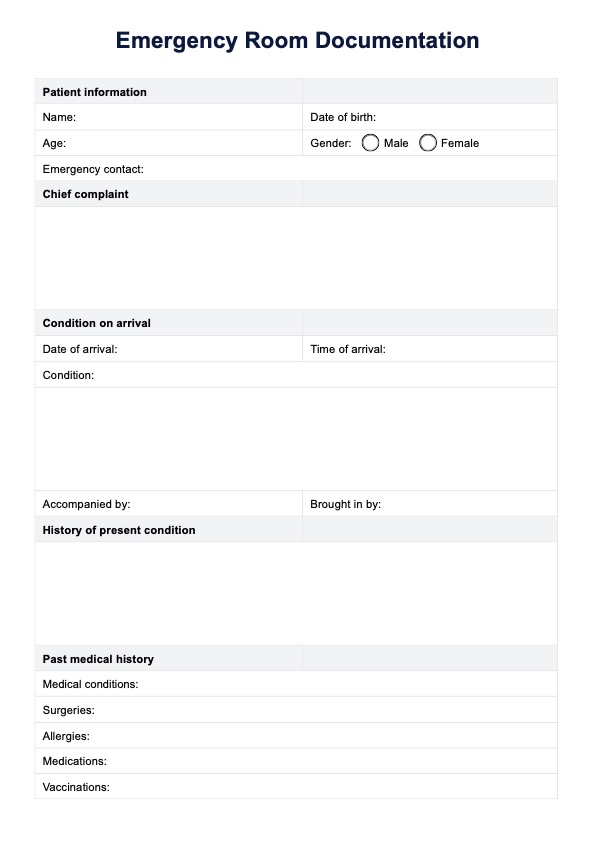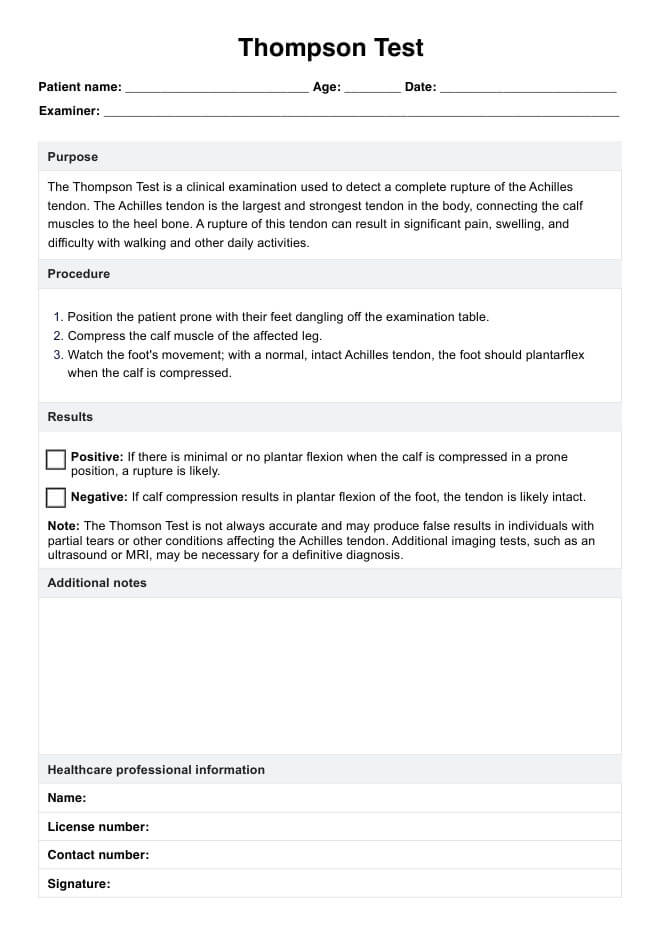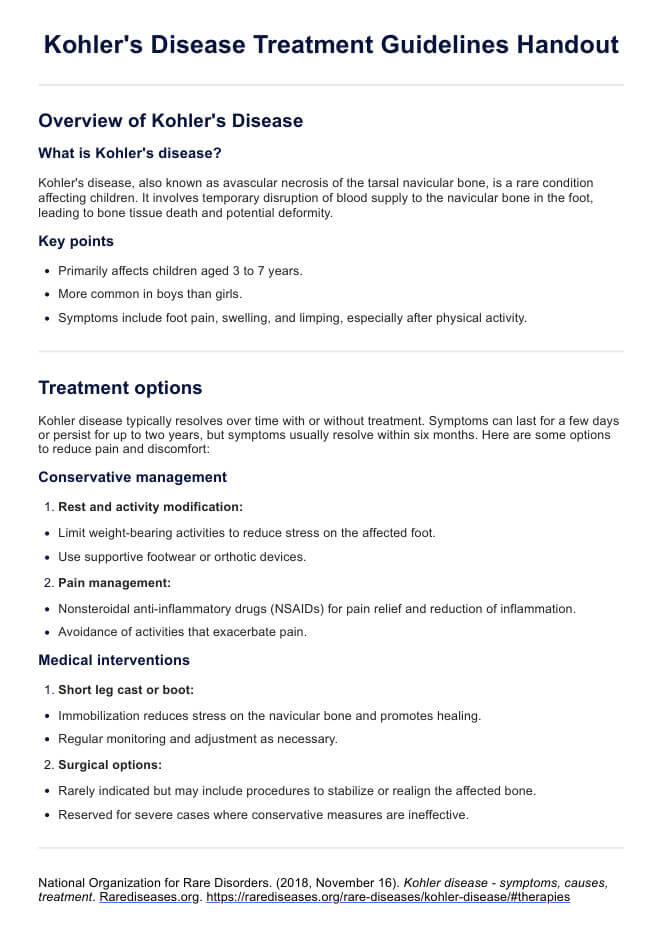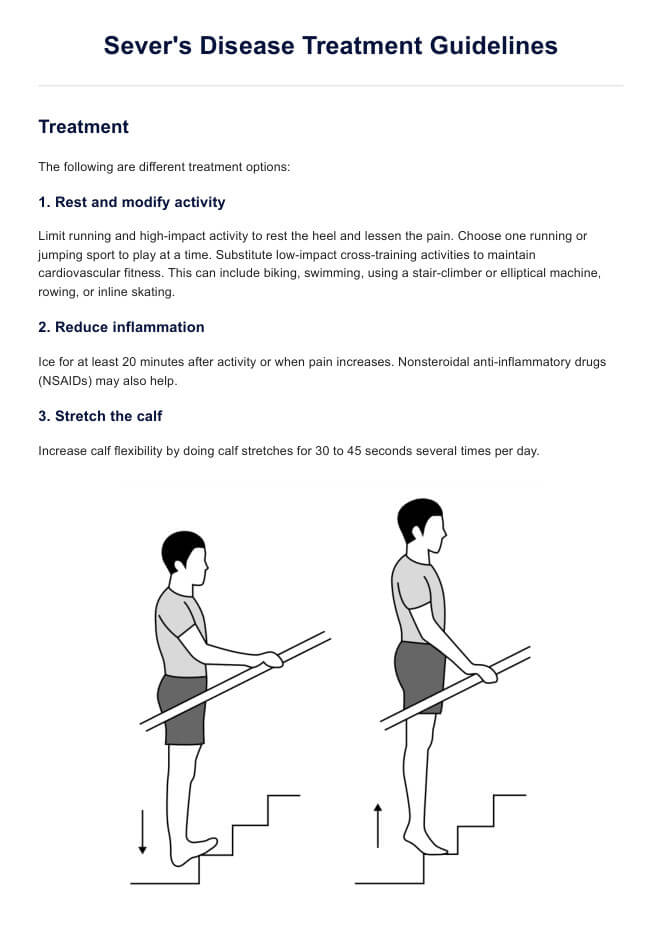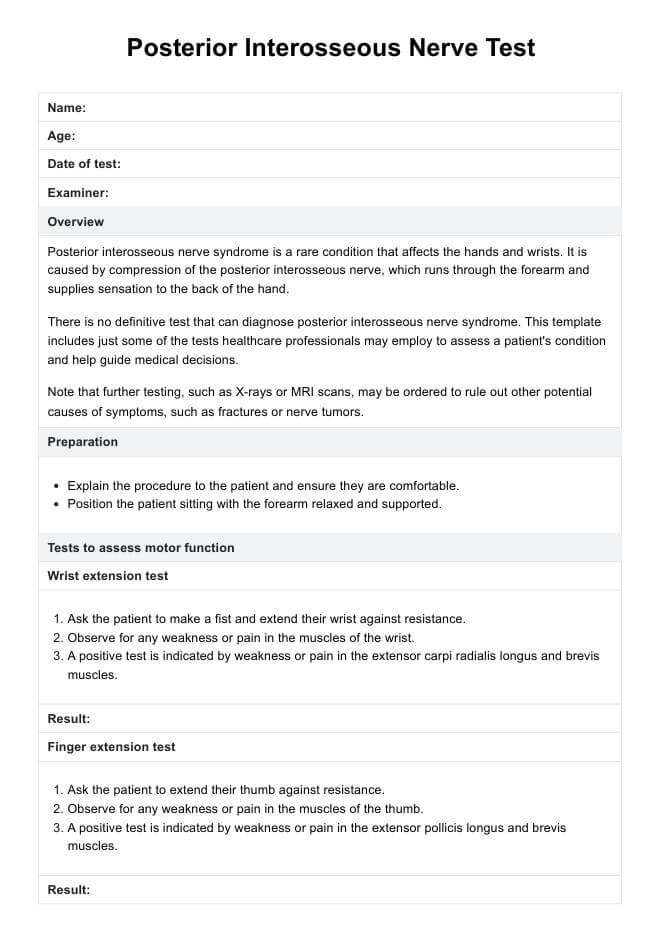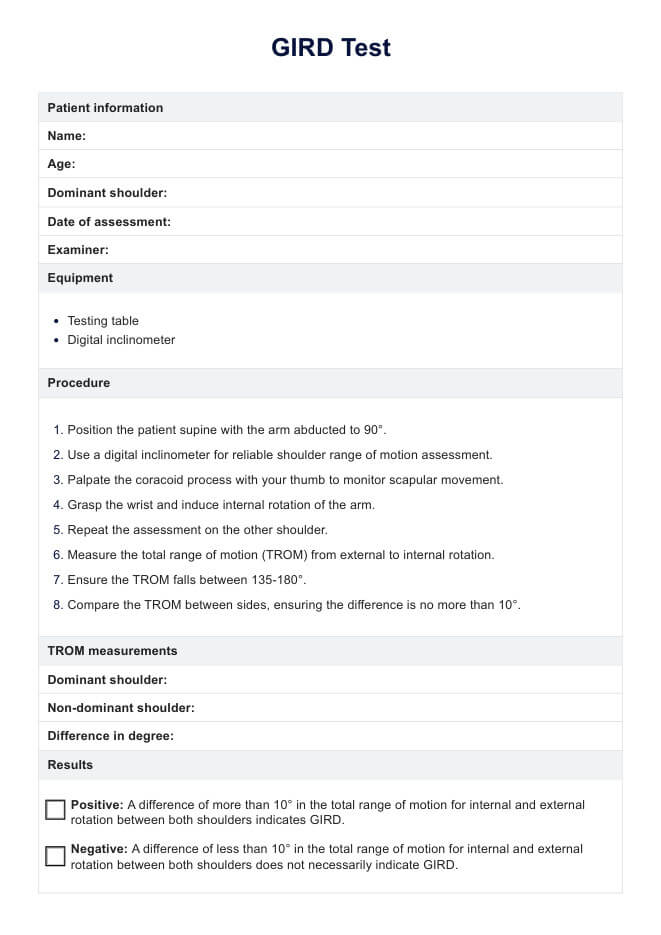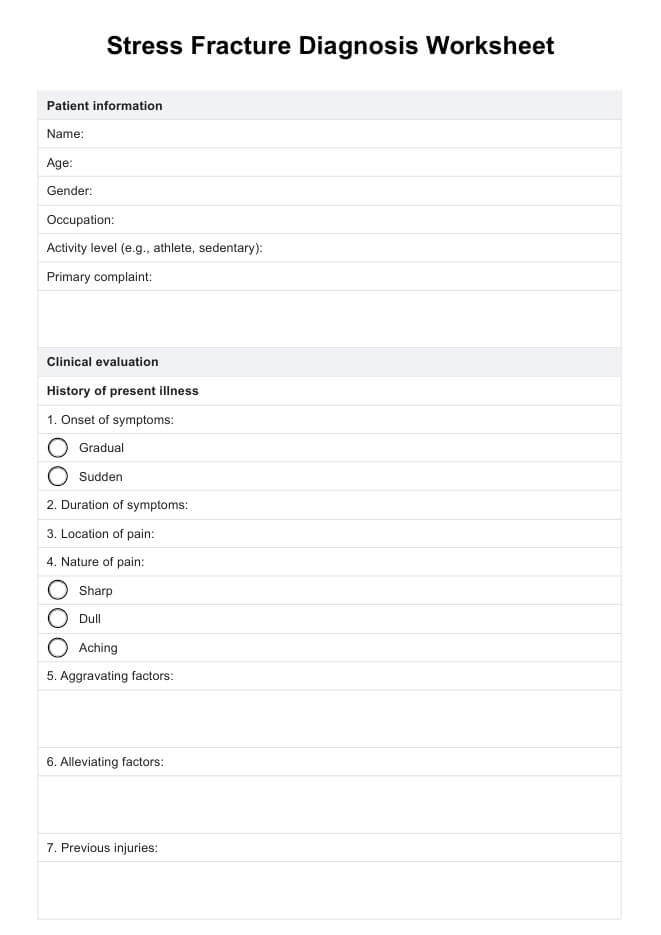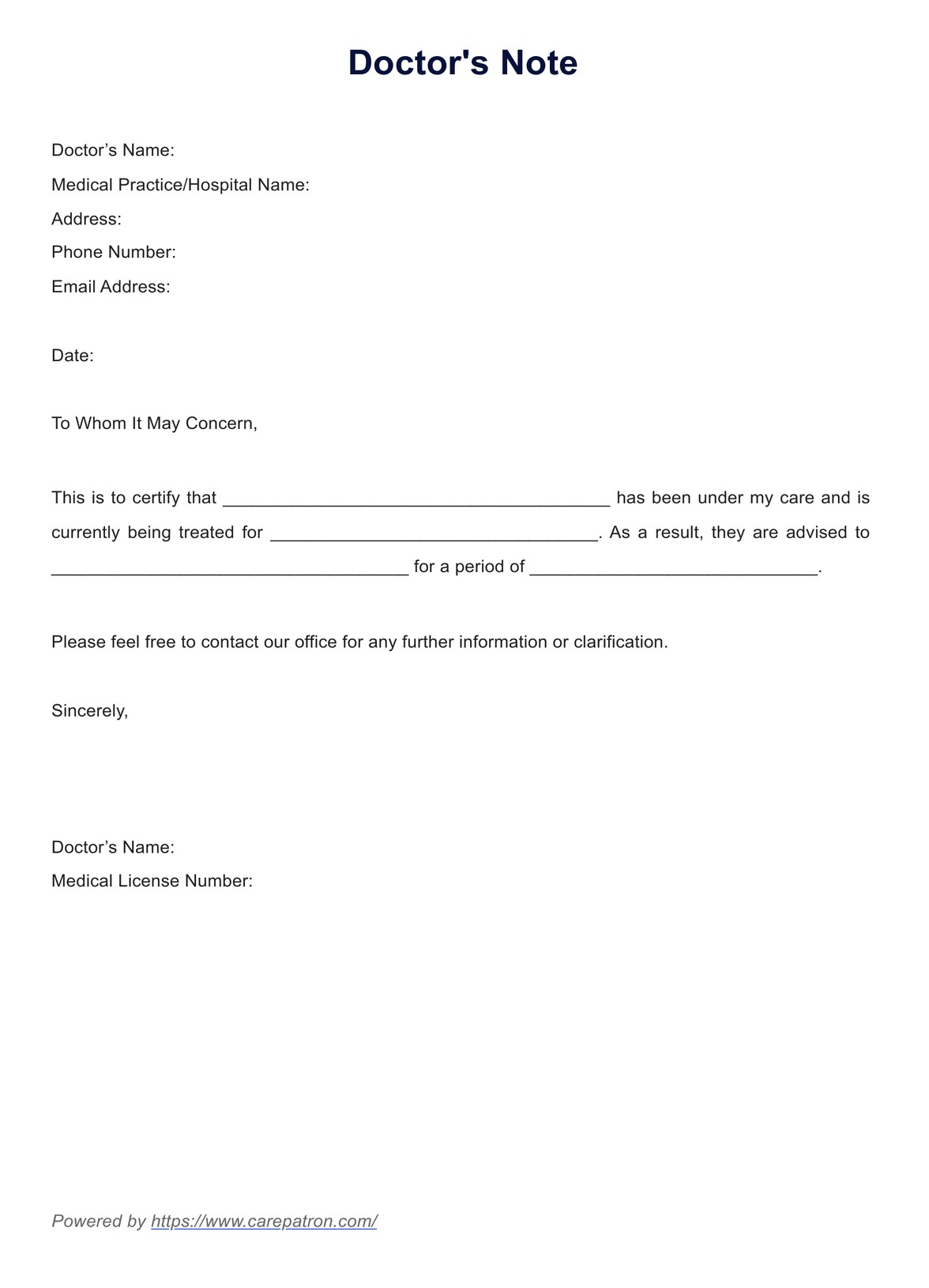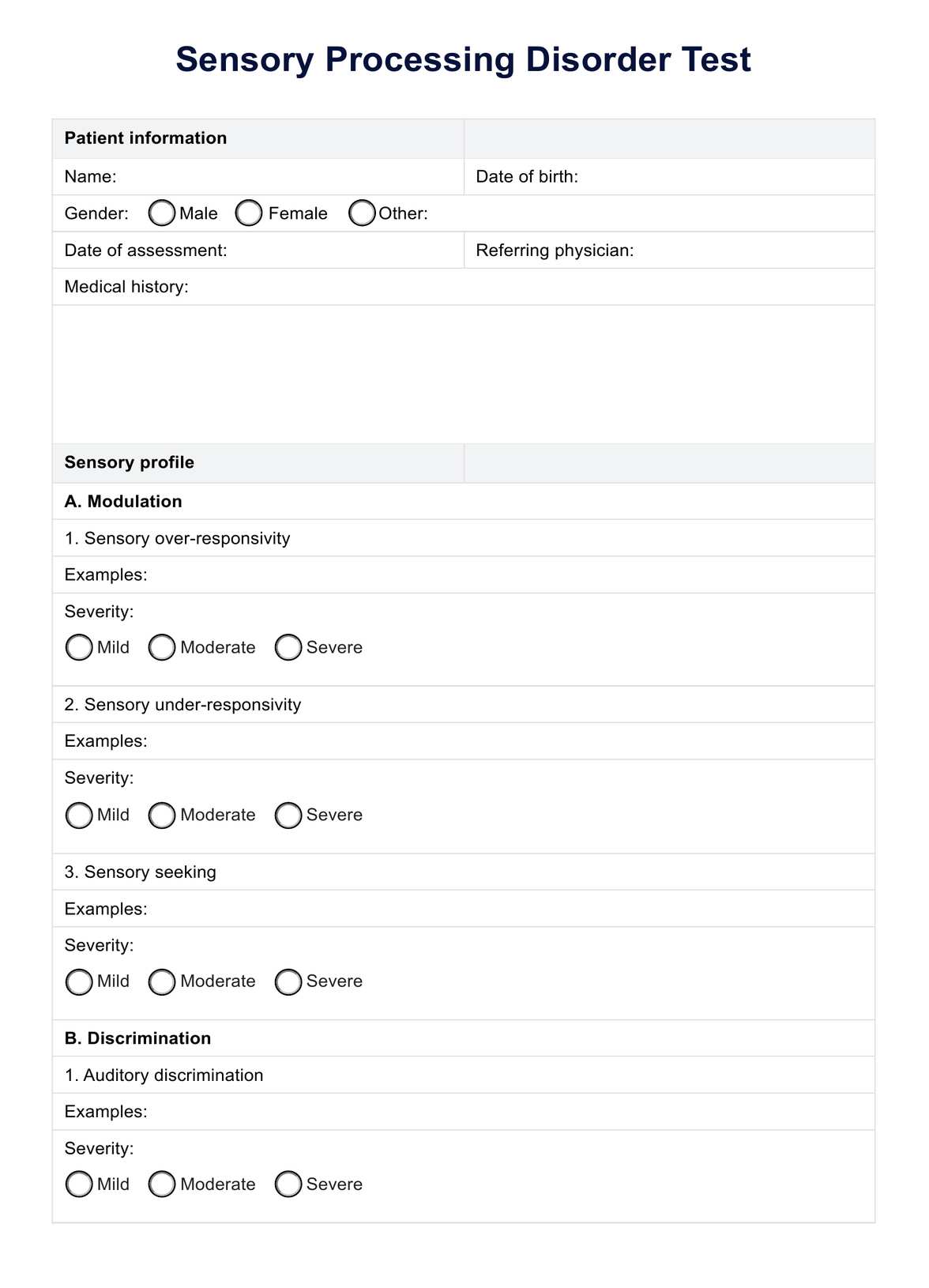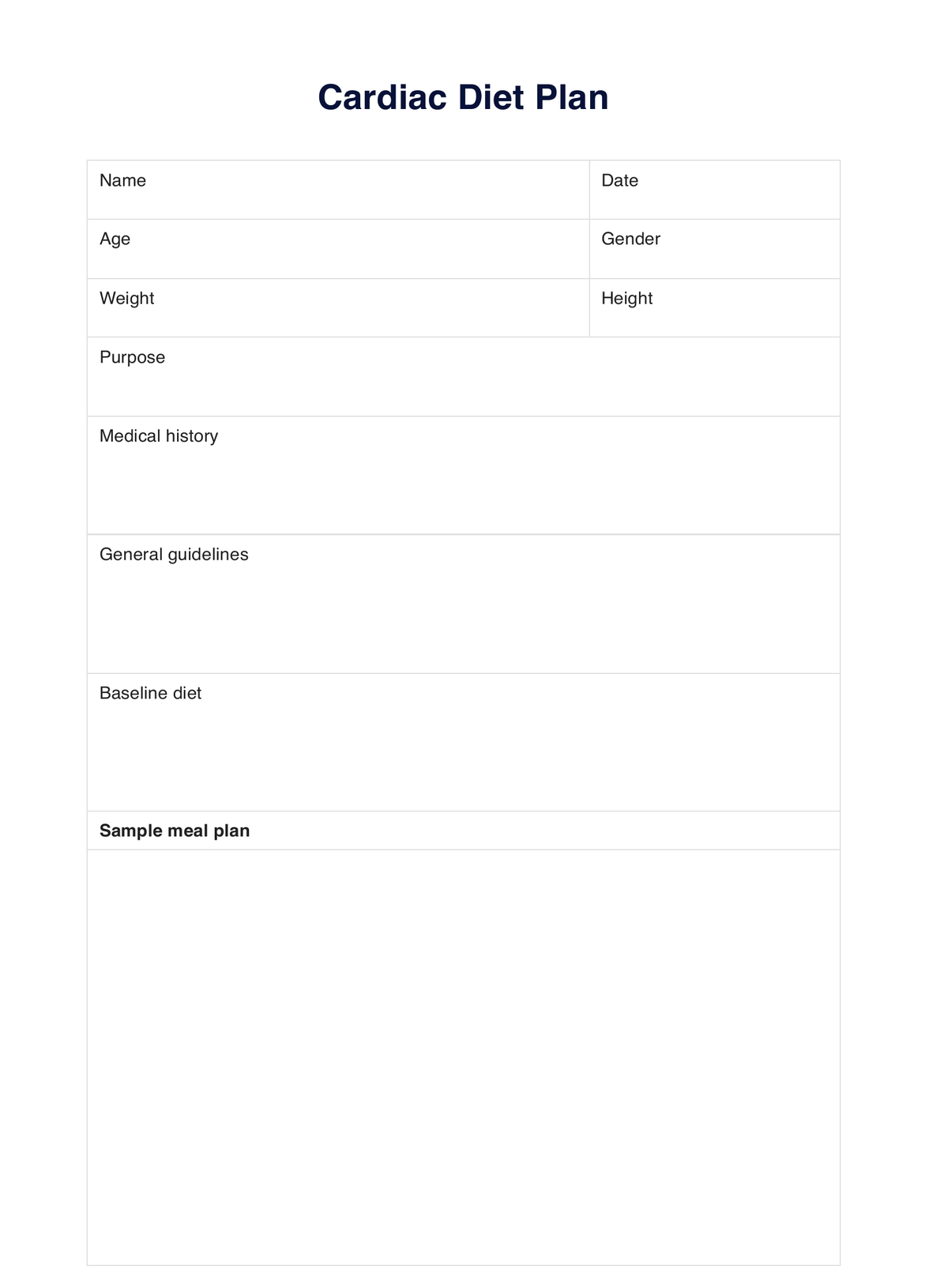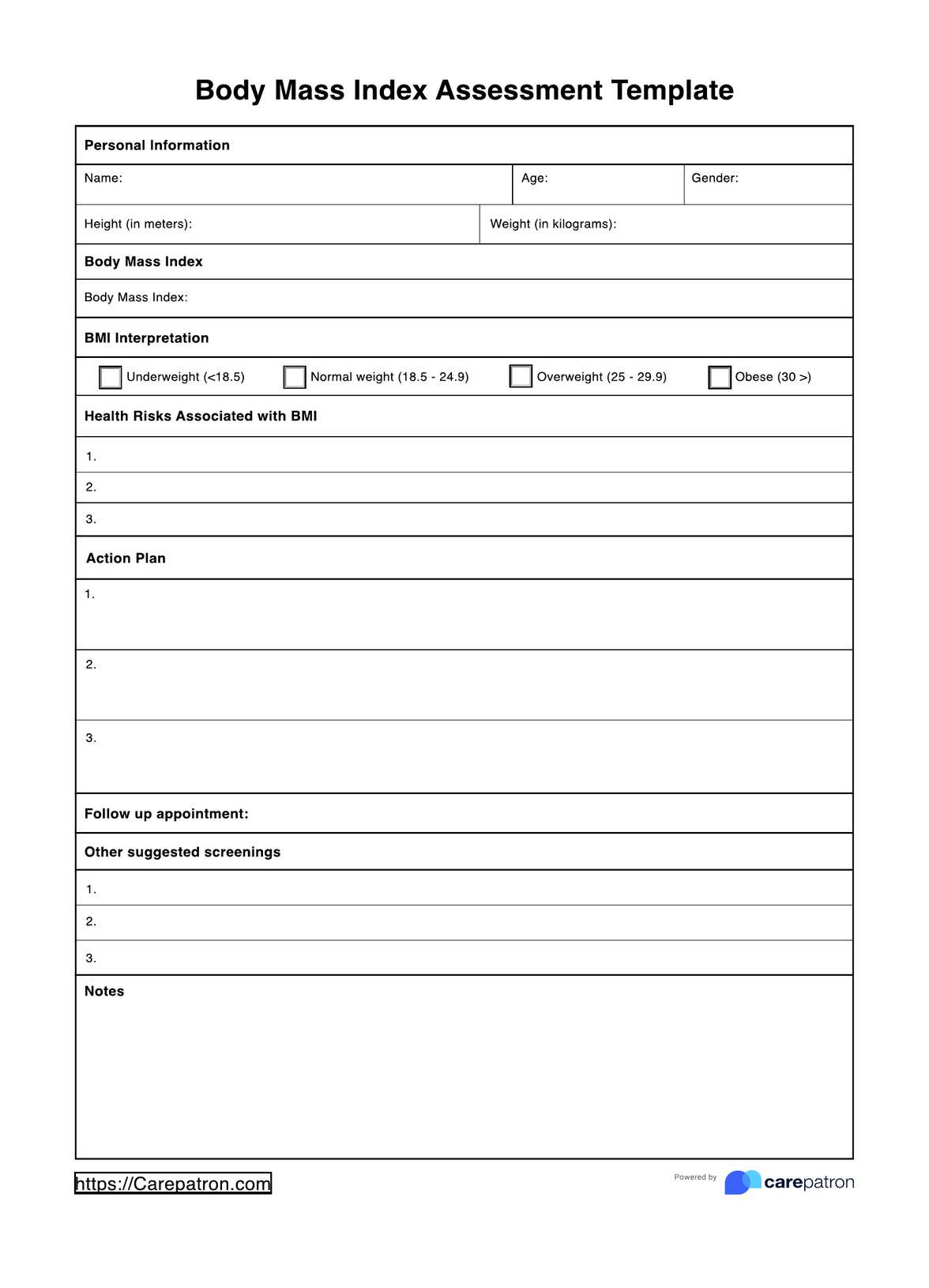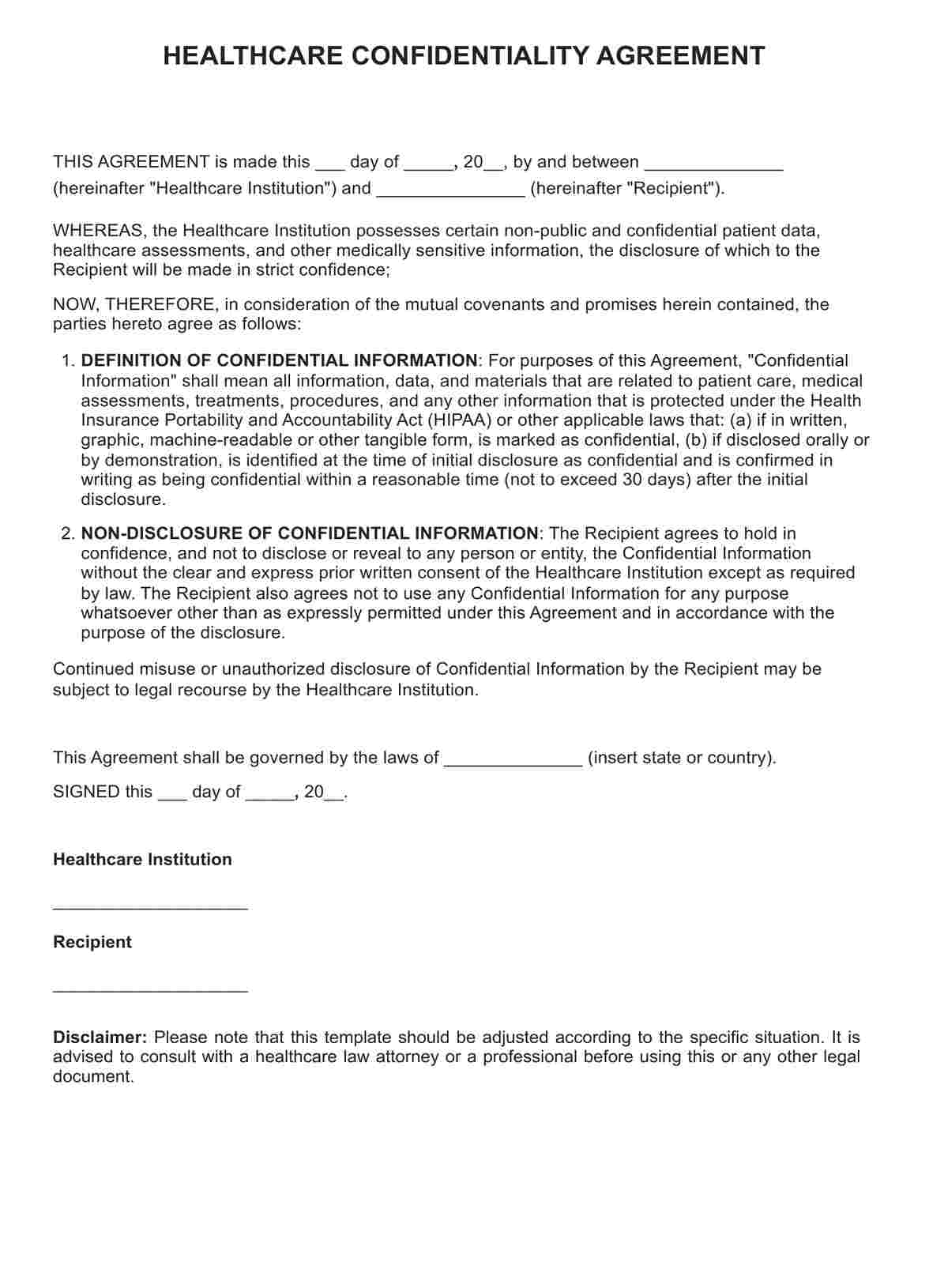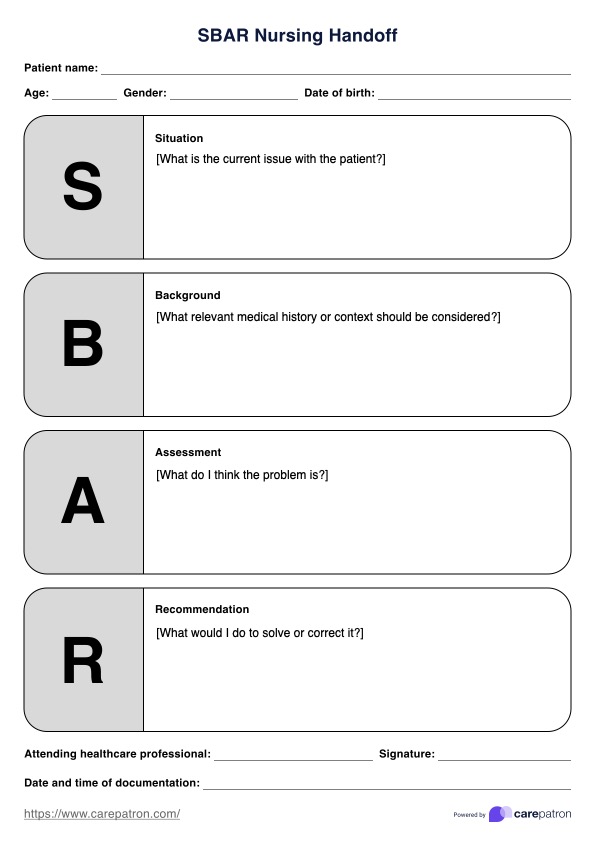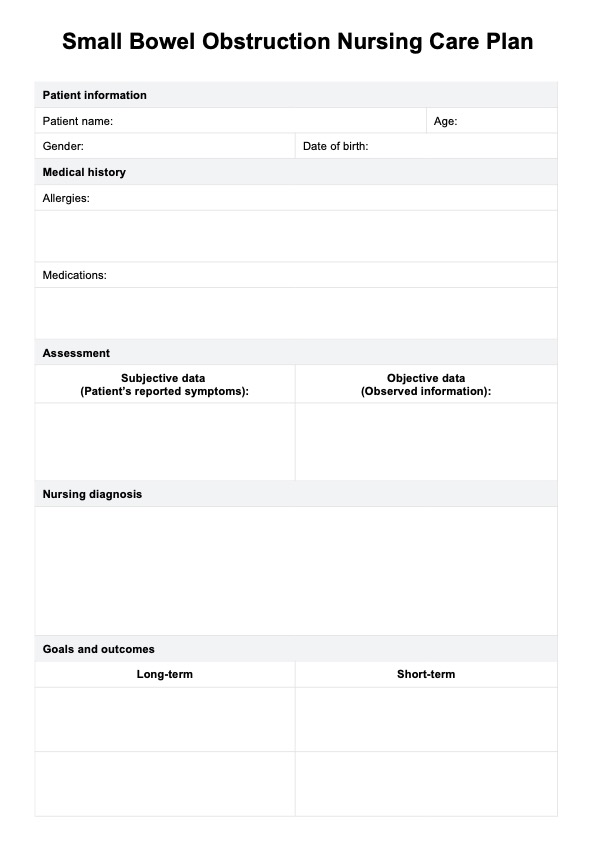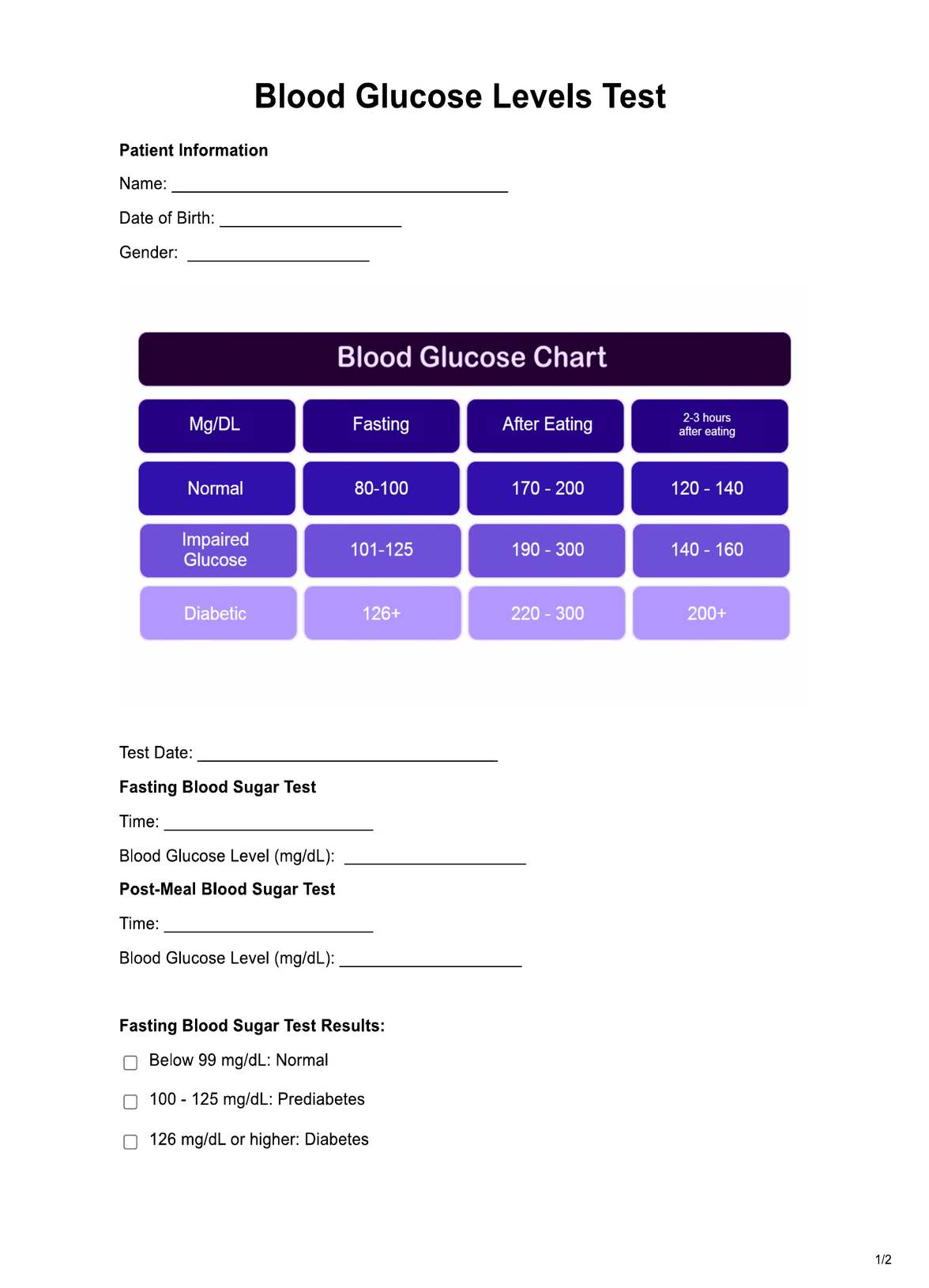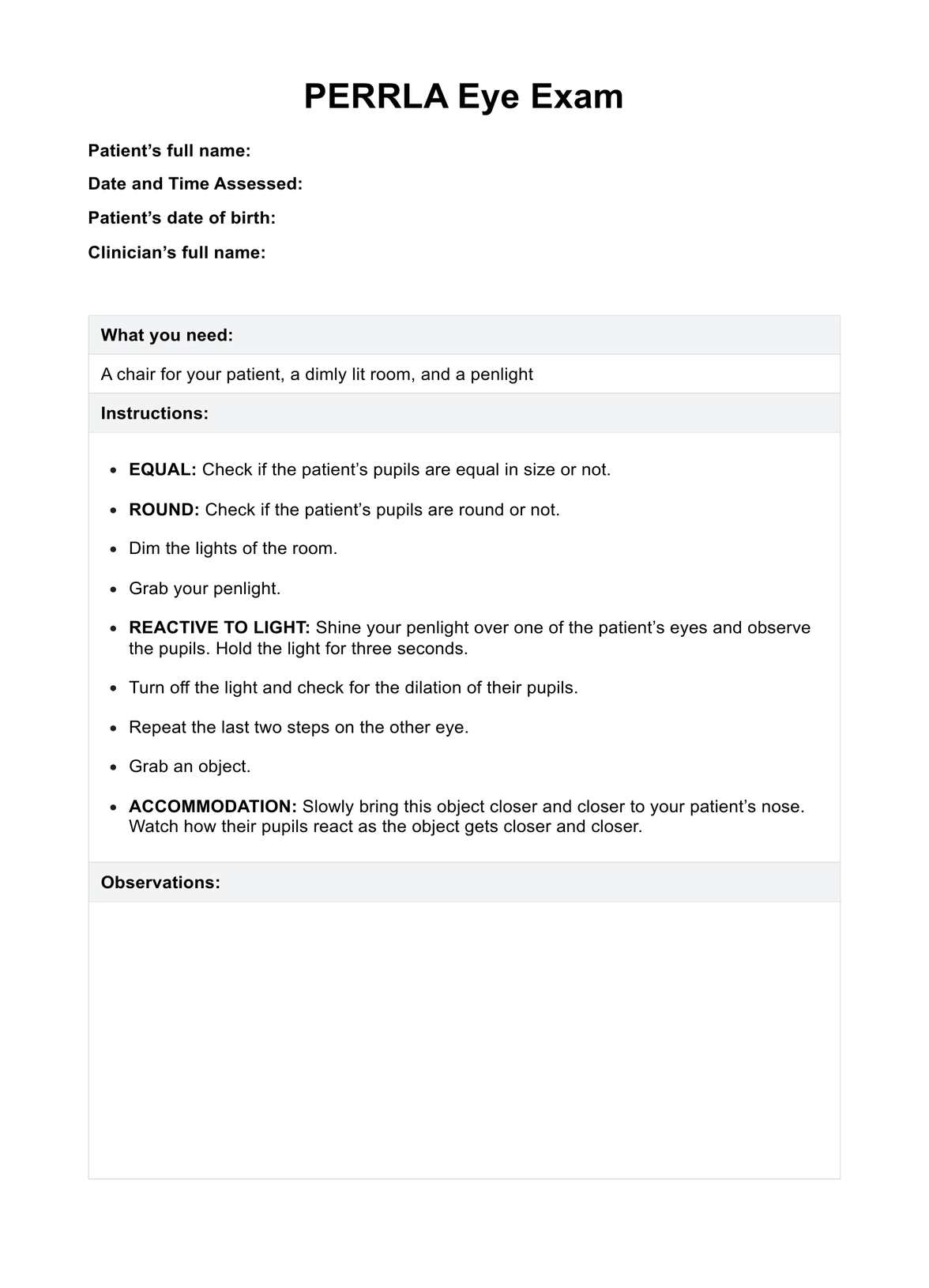Pediatric Vital Signs
Evaluate the overall condition of your young patient with the help of a pediatric vital signs chart. Click here for a free template.


What is a Vital Signs Chart for Pediatrics?
A Pediatric Vital Signs Chart is a crucial medical reference tool, offering a comprehensive overview of normal ranges for vital signs in children of various age groups. The essential signs you can expect to see on the chart encompass measurements such as temperature, blood pressure, heart rate, and respiratory rate. All of these are fundamental indicators of a child's health status. By providing age-specific ranges, the chart enables healthcare providers, parents, and caregivers to monitor and assess a child's well-being effectively.
To elaborate further, the chart outlines normal ranges based on average values from reputable sources, considering factors such as age. For instance, infants typically exhibit higher heart and respiratory rates than older children. This age-specific information aids in accurate assessment, ensuring that deviations from the norm can be promptly identified, allowing for timely intervention in potential health issues.
Pediatric Vital Signs Template
Pediatric Vital Signs Example
How to use our pediatric vitals signs template
Step 1. Obtain the template
For your convenience, ensure access to a valuable tool, such as the pediatric vital signs chart. This can be achieved by:
- Selecting either the "Download Template" or "Use Template" button.
Step 2. Familiarize yourself with the template
Go over the pediatric vitals chart and familiarize yourself with the following: age groups, heart rate, respiratory rate, temperature, oxygen saturation, and blood pressure measurement. Remember, the content is focused on age-specific ranges.
Step 3. Conduct the test and record the results
If the aim is to enhance the chart’s functionality beyond being a visual aid for patient education, it is advisable to input crucial patient details, including their vital signs readings, such as temperature, blood pressure - noting the diastolic and systolic blood pressure - heart rate, and respiratory rate.
Step 4. Analyze and interpret
Utilize the chart to request additional diagnostic tests or compare the patient's vital signs with established normal ranges. Alternatively, you can compare the results with a personalized chart tailored for your client, considering age, gender, and pre-existing medical conditions.
Step 5. Document and monitor
If the strategy involves utilizing the template to monitor your patient's vital signs, meticulously record and write the measurements in the designated section of our template. You are free to do this as often as needed.
Step 6. Secure the template copy
Post-consultation, you must safeguard the template, limiting access to authorized individuals exclusively. For digital copies, we recommend utilizing Carepatron, a secure patient record software that complies with global security standards, ensuring the protection of all patient records.
Results and interpretation
A normal Pediatric Vital Signs Chart results provide crucial insights into a child’s health by establishing the normal range for various vital signs. These parameters include temperature, heart rate (pulse), respiratory rate, blood pressure, and oxygen saturation (SpO2). Here’s an overview of possible interpretations for results you may obtain:
- Temperature: A child's normal temperature typically ranges from 36.5-37.5°C (97.7-99.5°F), and monitoring it can help identify signs of fever or illness.
- Respiratory rate: Though a normal respiratory rate will vary by age, children will have a higher respiratory rate than adults because they breathe more quickly.
- Heart rate or pulse: Infants generally exhibit higher heart rates, which gradually decrease with age. Abnormal results may indicate tachycardia or bradycardia. Note, though, that there may be transient variations due to other factors.
- Blood pressure: A child’s normal blood pressure is usually lower than an adult’s. Any changes in the child's blood pressure readings that may indicate high blood pressure or low blood pressure should be closely monitored.
- Oxygen saturation (SpO2): A normal oxygen saturation typically exceeds 95%.
If a child’s vital signs deviate from the established norms, it may signal a potential health concern, necessitating evaluation by a healthcare professional. Patients and caregivers should diligently document these vital signs as patient notes and promptly seek professional guidance if deviations are observed.
When to use this Pediatric Vital Signs Chart
Healthcare providers, including doctors, nurses, and medical professionals, rely on this chart to monitor the health status of pediatric patients. By comparing measured vital signs with the established normal ranges, healthcare providers can promptly identify deviations that may signify underlying health issues, guiding them in making informed decisions regarding diagnosis and treatment.
First responders and medical technicians use the Pediatric Vital Signs Chart as a rapid emergency assessment tool. The chart aids in gauging the severity of a child's condition and facilitates swift decision-making regarding necessary interventions. The chart becomes a critical reference point in time-sensitive scenarios, ensuring a comprehensive evaluation of the child's health.
Parents and caregivers leverage the Pediatric Vital Signs Chart for home care purposes. When a child falls ill, this chart empowers them to monitor vital signs such as temperature, blood pressure, heart rate, and respiratory rate.
Additionally, the chart is a valuable educational resource in training programs for healthcare providers, parents, and caregivers. It aids in understanding children's normal ranges of vital signs and guides effective monitoring practices.
Commonly asked questions
Pediatricians, in addition to the parents and caregivers of the child, typically use a pPediatric Vital Signs Chart.
Pediatric Vital Signs Charts can be used during emergencies, homecare, or when educating caretakers or fellow practitioners about these pieces of information.
Pediatric Vital Signs Charts can be used in multiple ways. They can be used as a guide, reference, educational resource, or document to record the patient's current vital signs for analysis, interpretation, and assessment of their condition.


